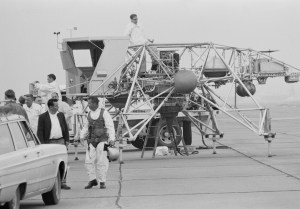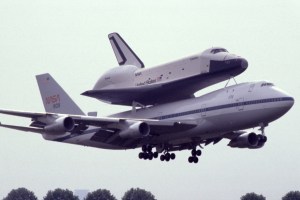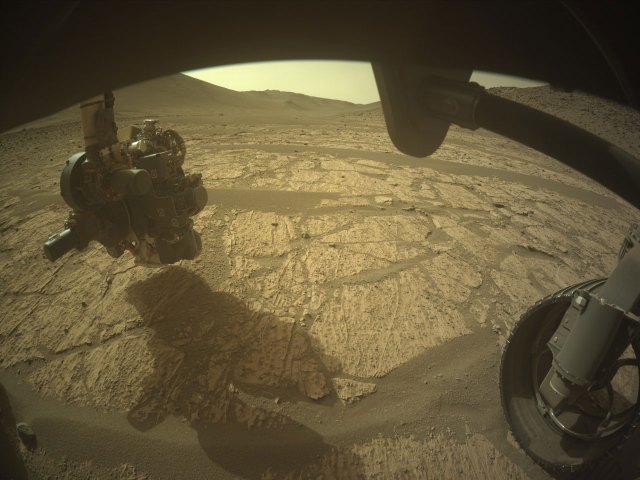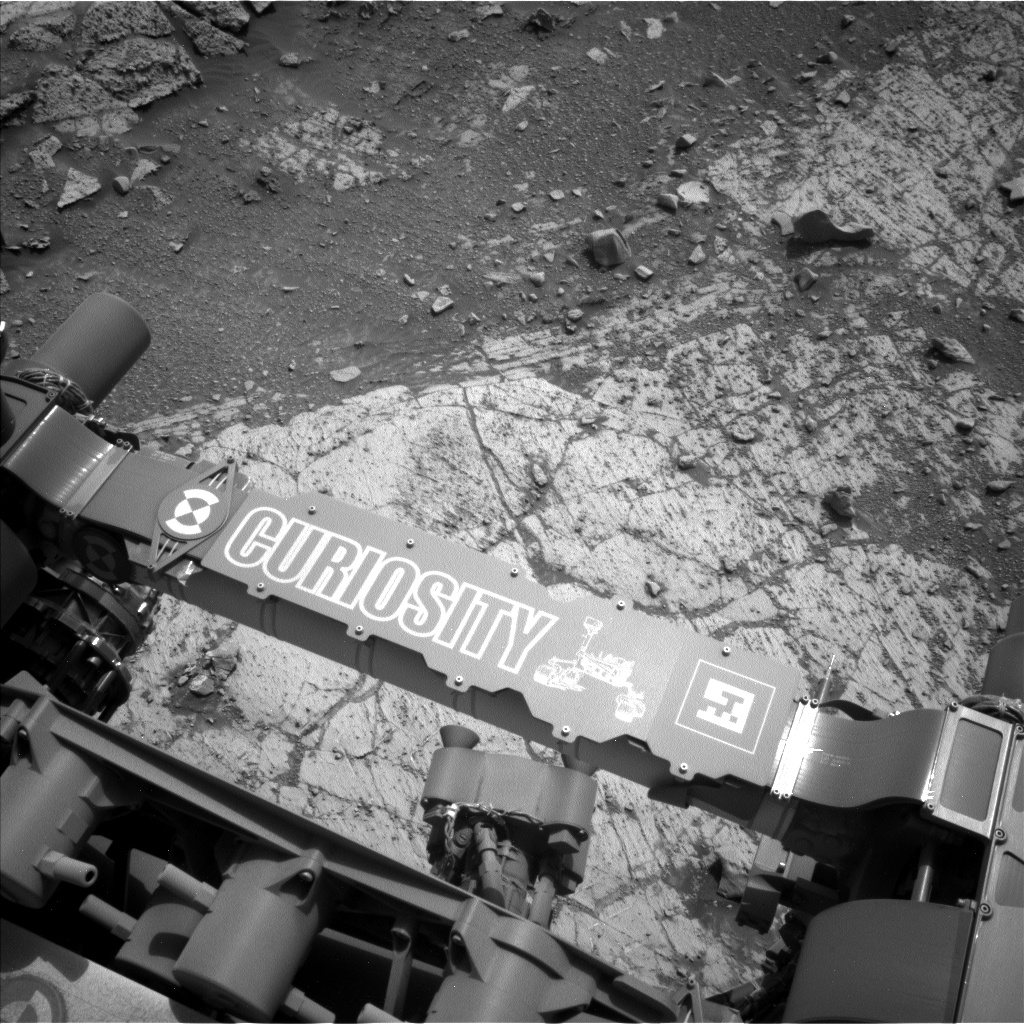35 Years Ago: STS-30 Launches Magellan to Venus
On May 4, 1989, space shuttle Atlantis took off on its third flight, STS-30, from NASA’s Kennedy Space Center (KSC) in Florida. Its five-person crew of Commander David M. Walker, Pilot Ronald J. Grabe, and Mission Specialists Mark C. Lee, Norman E. Thagard, and Mary L. Cleave flew a four-day mission that deployed the Magellan […]
On May 4, 1989, space shuttle Atlantis took off on its third flight, STS-30, from NASA’s Kennedy Space Center (KSC) in Florida. Its five-person crew of Commander David M. Walker, Pilot Ronald J. Grabe, and Mission Specialists Mark C. Lee, Norman E. Thagard, and Mary L. Cleave flew a four-day mission that deployed the Magellan spacecraft, managed by NASA’s Jet Propulsion Laboratory in Southern California, to study Venus, uniting NASA’s human and interplanetary spaceflight programs. It also marked the first U.S. planetary launch since 1978. The astronauts deployed Magellan and its upper stage on their first day in space, sending the spacecraft on its 15-month journey to Venus. Following its arrival at the cloud-shrouded planet, Magellan spent four years mapping Venus in unprecedented detail, vastly increasing our knowledge of the planet.
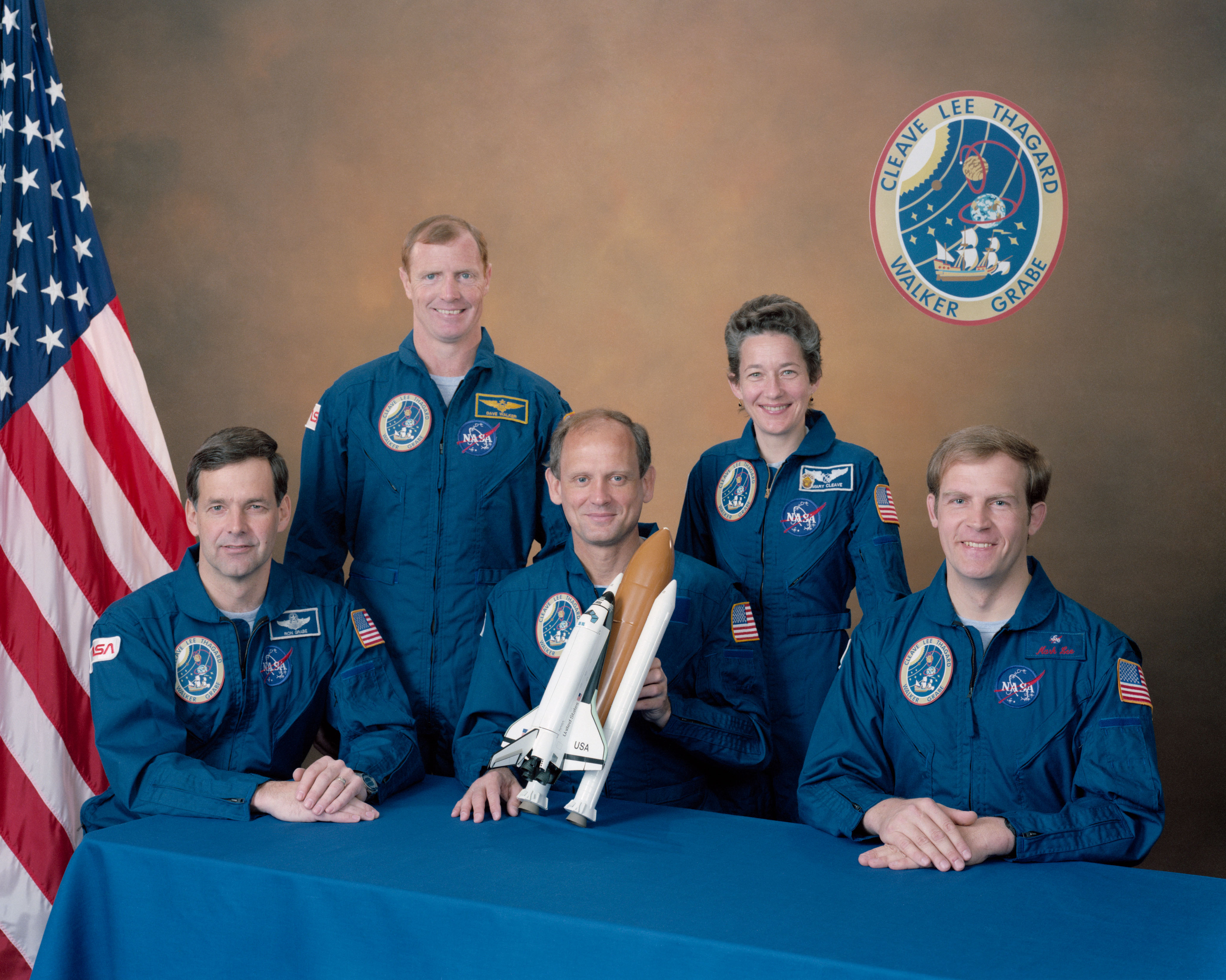
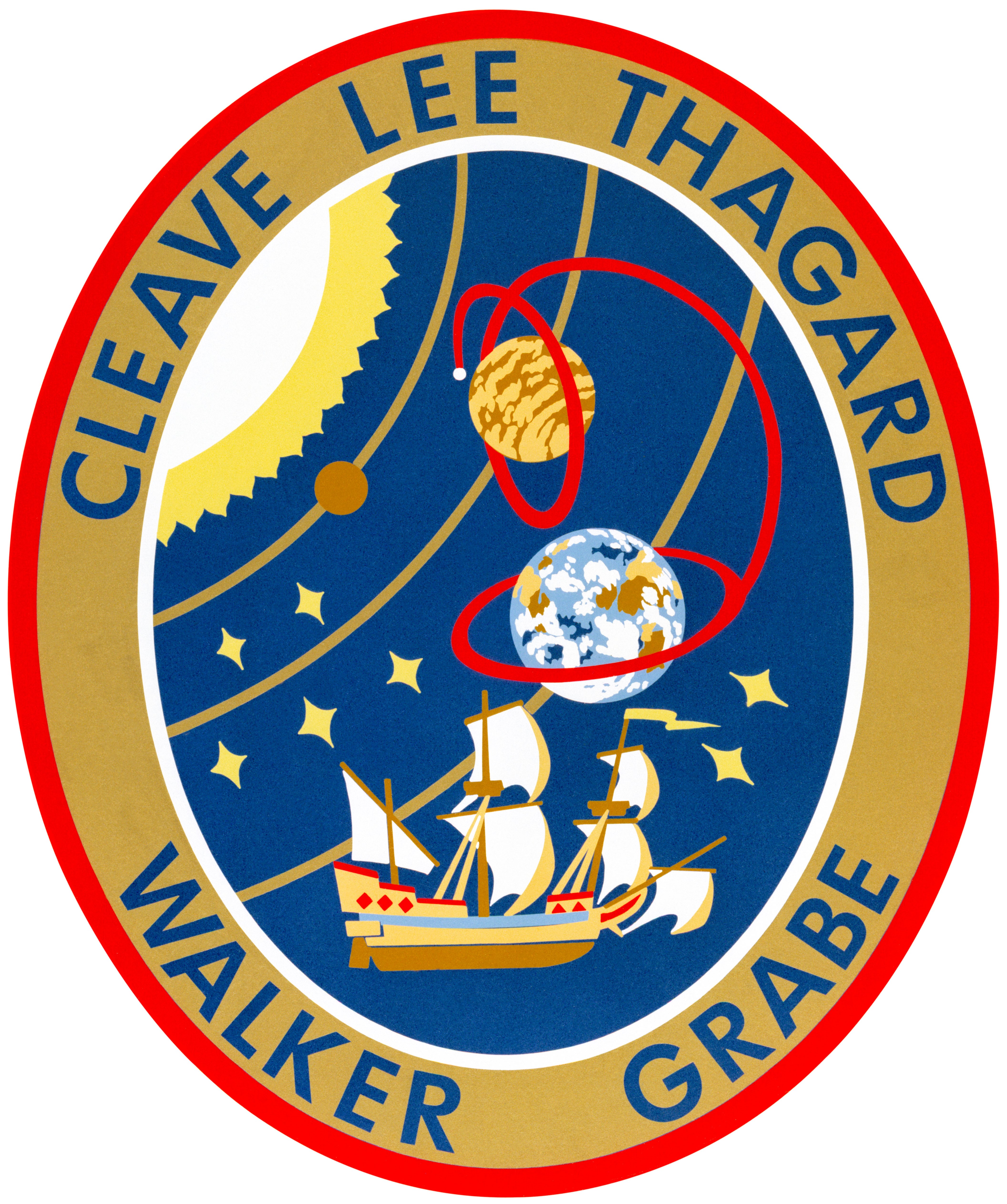
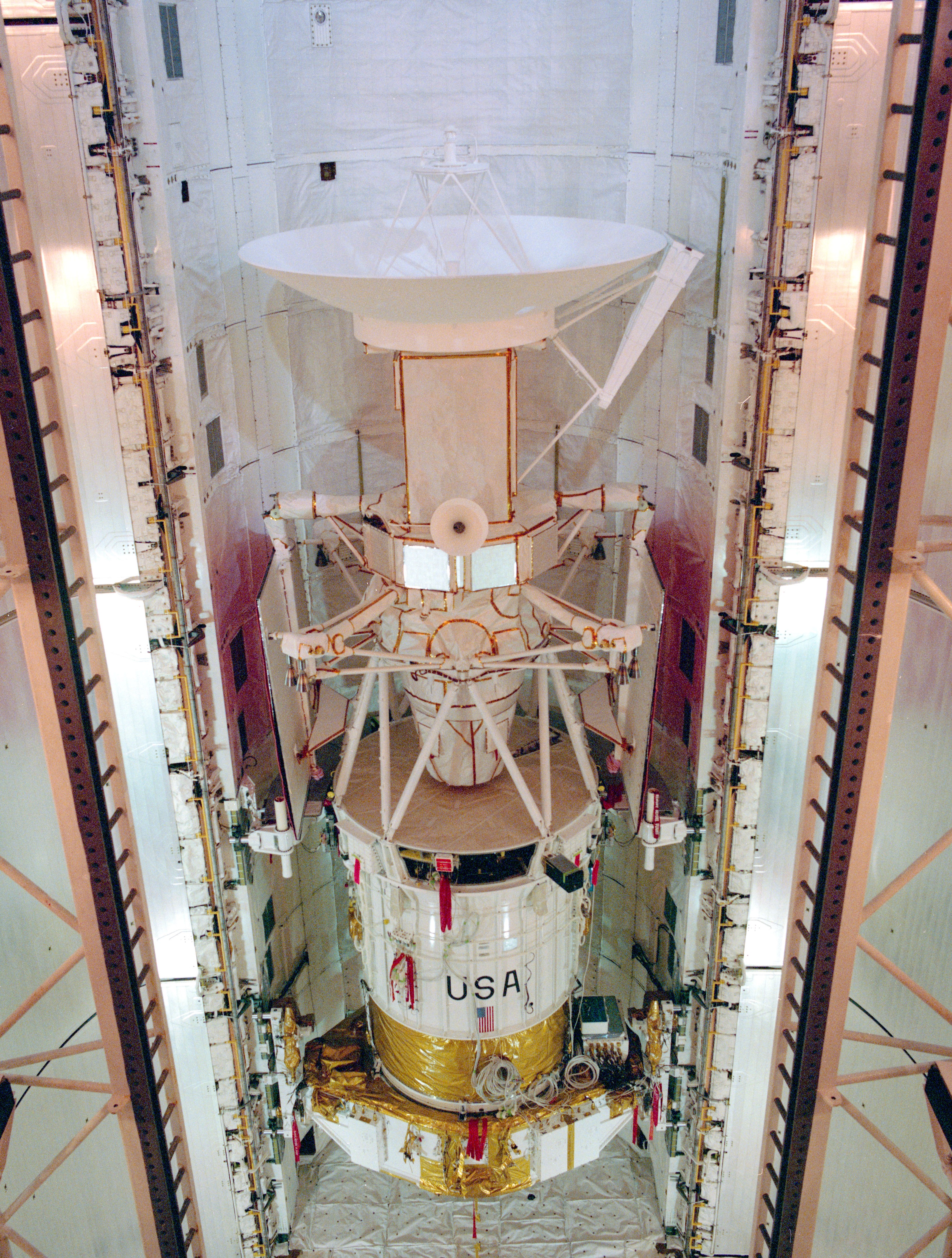
Left: The STS-30 crew of Pilot Ronald J. Grabe, left, Commander David M. Walker, and Mission Specialists Norman E. Thagard, Mary L. Cleave, and Mark C. Lee. Middle: The STS-30 crew patch. Right: The Magellan spacecraft in Atlantis’ payload bay in preparation for STS-30.
In March 1988, NASA announced Walker, Grabe, Lee, Thagard, and Cleave as the STS-30 crew for the flight planned for late April 1989. Thagard had flown twice before, on STS-7 in June 1983 and the STS-51B Spacelab 3 mission in April-May 1985. Walker, Grabe, and Cleave had each flown once before, on STS-51A, STS-51J, and STS-61B, respectively, while STS-30 marked Lee’s first trip into space. Walker and Thagard joined NASA in the astronaut class of 1978, Grabe and Cleave joined in 1980, and Lee in 1984. During their four-day mission, the astronauts planned to deploy Magellan and its Inertial Upper Stage (IUS) on the first flight day. Magellan needed to launch within a 29-day window, dictated by the alignments of Venus and Earth to achieve the proper trajectory for the journey to its destination.
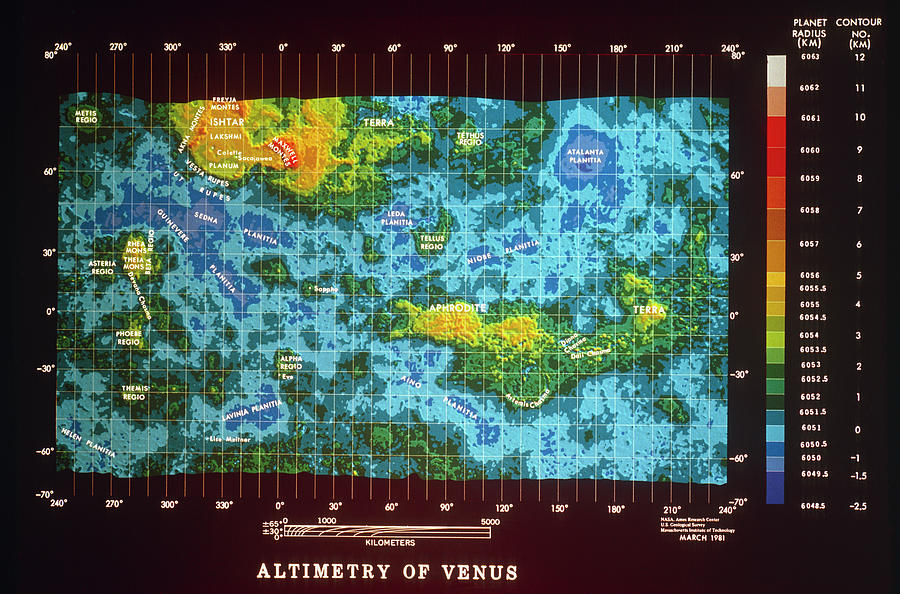
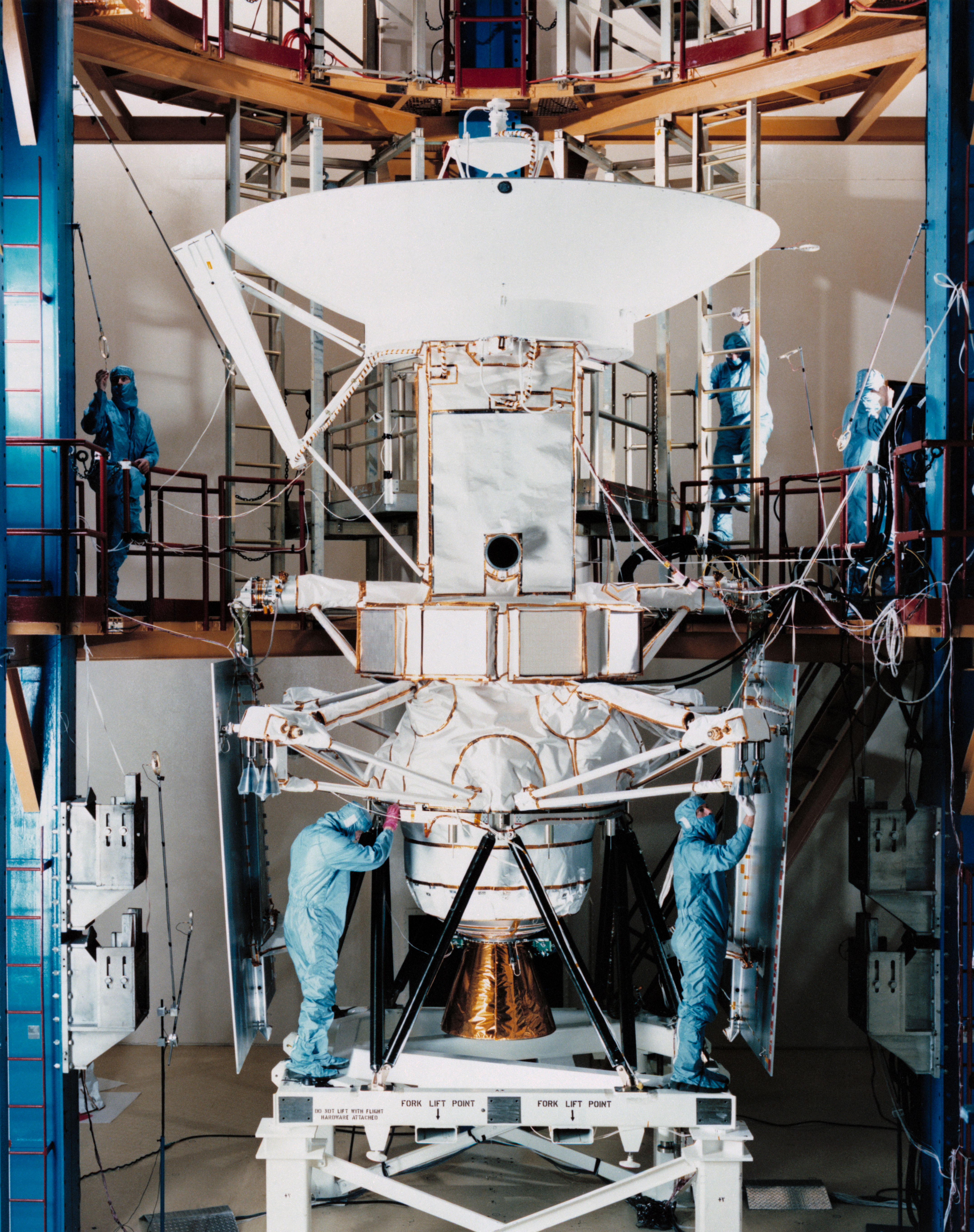
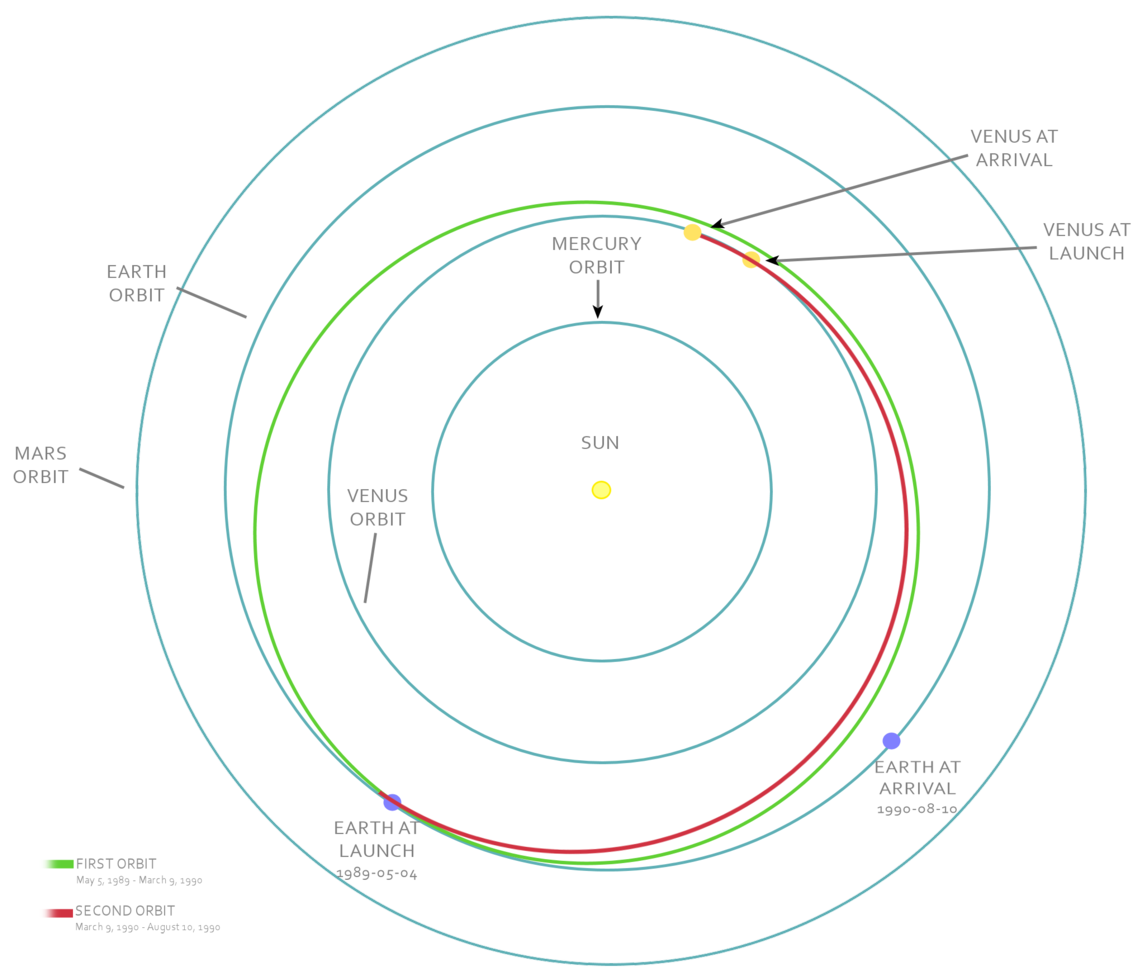
Left: Global map of Venus based on Pioneer Venus Orbiter radar data. Middle: Engineers at Martin Marietta prepare Magellan for shipment to NASA’s Kennedy Space Center in Florida. Right: Schematic of Magellan’s trajectory from Earth to Venus.
Magellan sought to acquire the highest resolution radar imagery of Venus, improving on data obtained by earlier spacecraft. During its 14 years orbiting Venus between 1978 and 1992, Pioneer Venus Orbiter, managed by the NASA Ames Research Center in California’s Silicon Valley, among other observations used its radar to map approximately 90% of Venus at a resolution of about 10 kilometers. Scientists yearned for higher resolution radar imagery, and the Soviet Union’s Venera 15 and 16, with their larger antennas, mapped about a quarter of the planet’s surface to a resolution of 1 to 2 kilometers between October 1983 and June 1984. Initiated as the Venus Radar Mapper mission in 1983, NASA renamed the project in 1985 after the 16th century Portuguese explorer Ferdinand Magellan. Martin Marietta Astronautics Group in Denver built the spacecraft, much of it from space parts, including using a spare main spacecraft bus from the Voyager program. Originally, plans called for Magellan to launch in April 1988 aboard the space shuttle using a Centaur upper stage to send it on a four-month journey to Venus. Following the Challenger accident, NASA canceled the Centaur as a space shuttle upper stage, remanifesting Magellan on the IUS. The first available launch window for a four-month flight occurred in October 1989, but the Jupiter-bound Galileo spacecraft needed that opportunity as it required a gravity-assist at Venus to get it to its final destination. Specialists settled on a longer flight time for Magellan to use the earlier April-May 1989 window. After deployment from the shuttle, the two-stage IUS would place Magellan on its interplanetary journey that would take it 1.5 times around the Sun. Arriving at Venus, Magellan’s solid-rocket Star 48B motor would fire to place it into orbit around Venus to begin its primary mission lasting 243 days, the duration of one Venusian day. Using its high-gain antenna as a radar dish, Magellan would map at least 70 percent of the cloud-shrouded planet’s surface to a resolution of one kilometer.
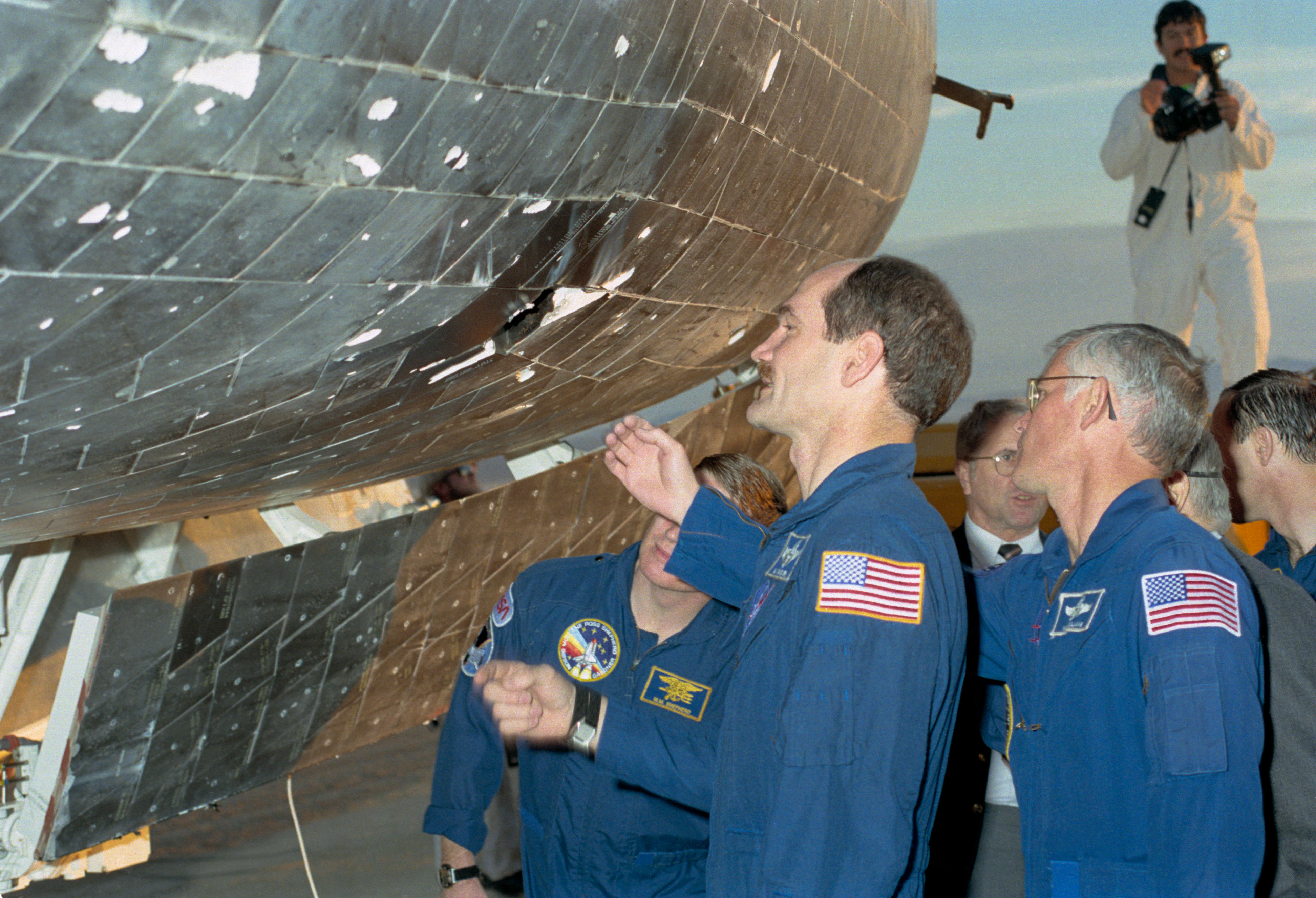
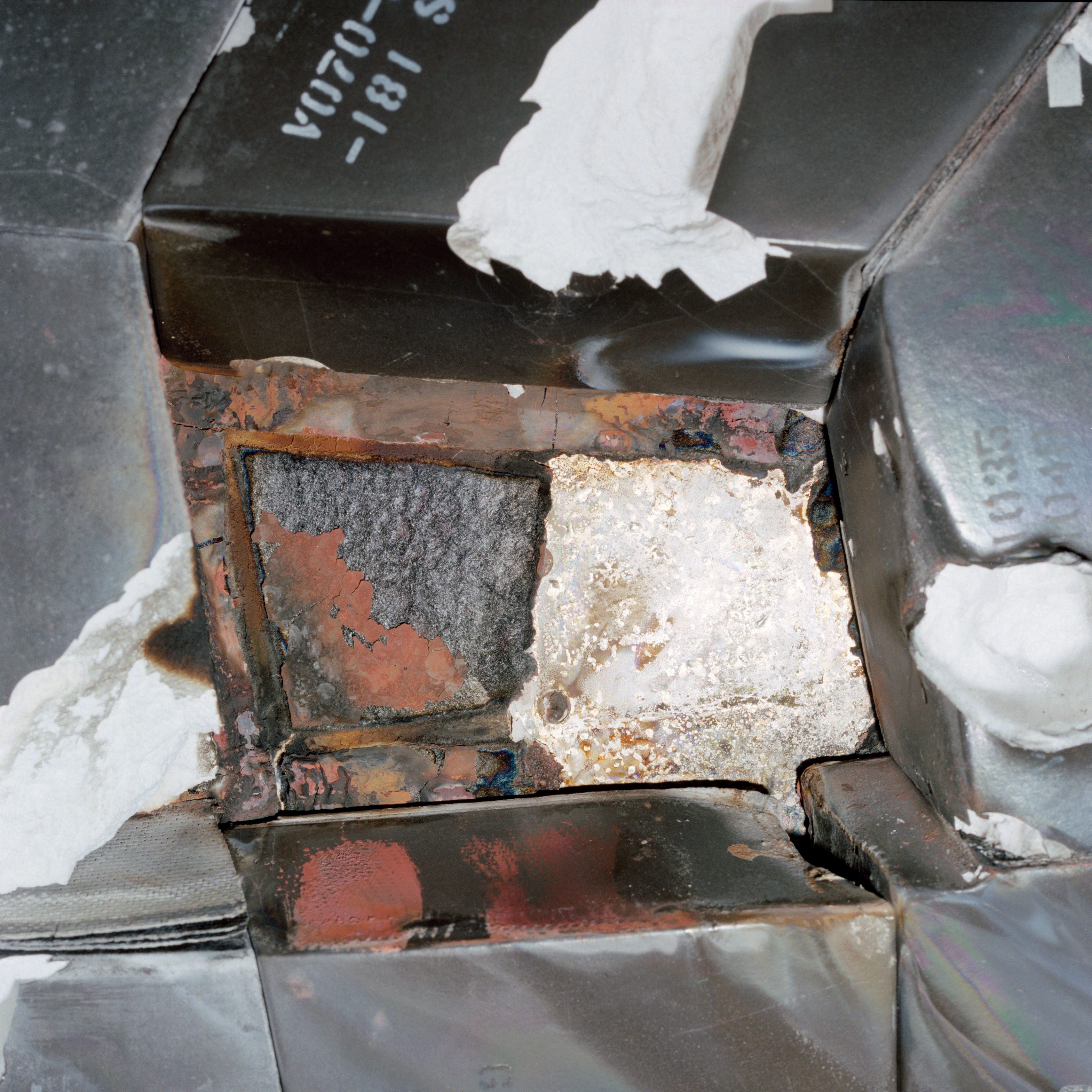
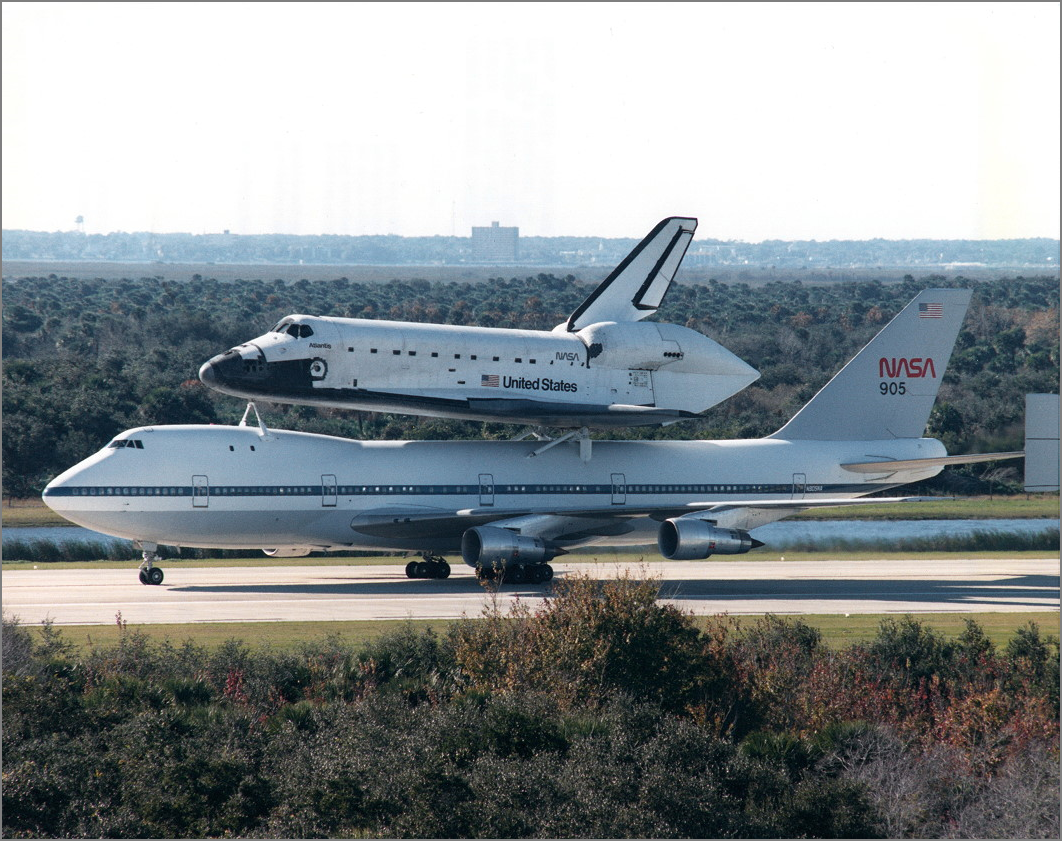
Left: STS-27 astronauts inspect the tile damage on Atlantis. Middle: Closeup of missing tile area on Atlantis. Right: Atlantis returns to NASA’s Kennedy Space Center in Florida following STS-27.
Atlantis landed at Edwards Air Force Base in California’s Mojave Desert on Dec. 6, 1988, concluding the STS-27 mission. During launch four days earlier, 85 seconds after liftoff a piece of insulation from the tip of the right-hand solid rocket booster broke away and struck Atlantis’ right side. While in orbit, the crew used the shuttle’s Remote Manipulator System, or robotic arm, to image Atlantis for any signs of damage. The astronauts clearly saw extensive damage on their onboard monitors, but due to the classified nature of the mission, downlinking the video required encryption that greatly degraded the image quality. Ground controllers did not fully appreciate the extent of the damage and remained unconcerned during Atlantis’ reentry. Not until the postlanding inspection did engineers and managers realize with alarm how close they came to disaster. Atlantis arrived back at KSC on Dec. 13, where workers towed it to the Orbiter Processing Facility (OPF) the next day for investigation into and repair of the most significant tile damage seen up to that time. More than 700 tiles received some damage, with one tile missing entirely and the underlying metal partially melted.
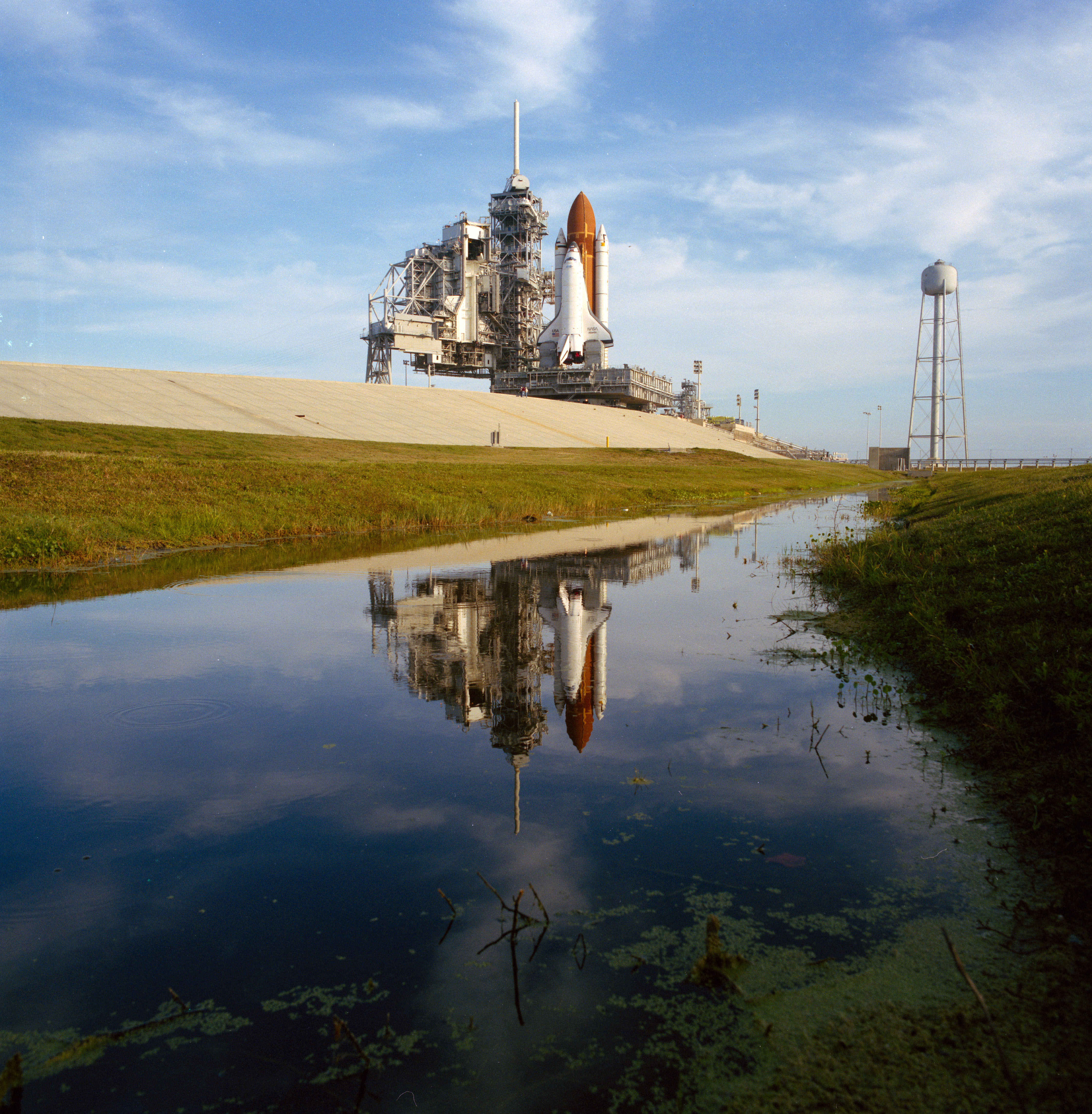
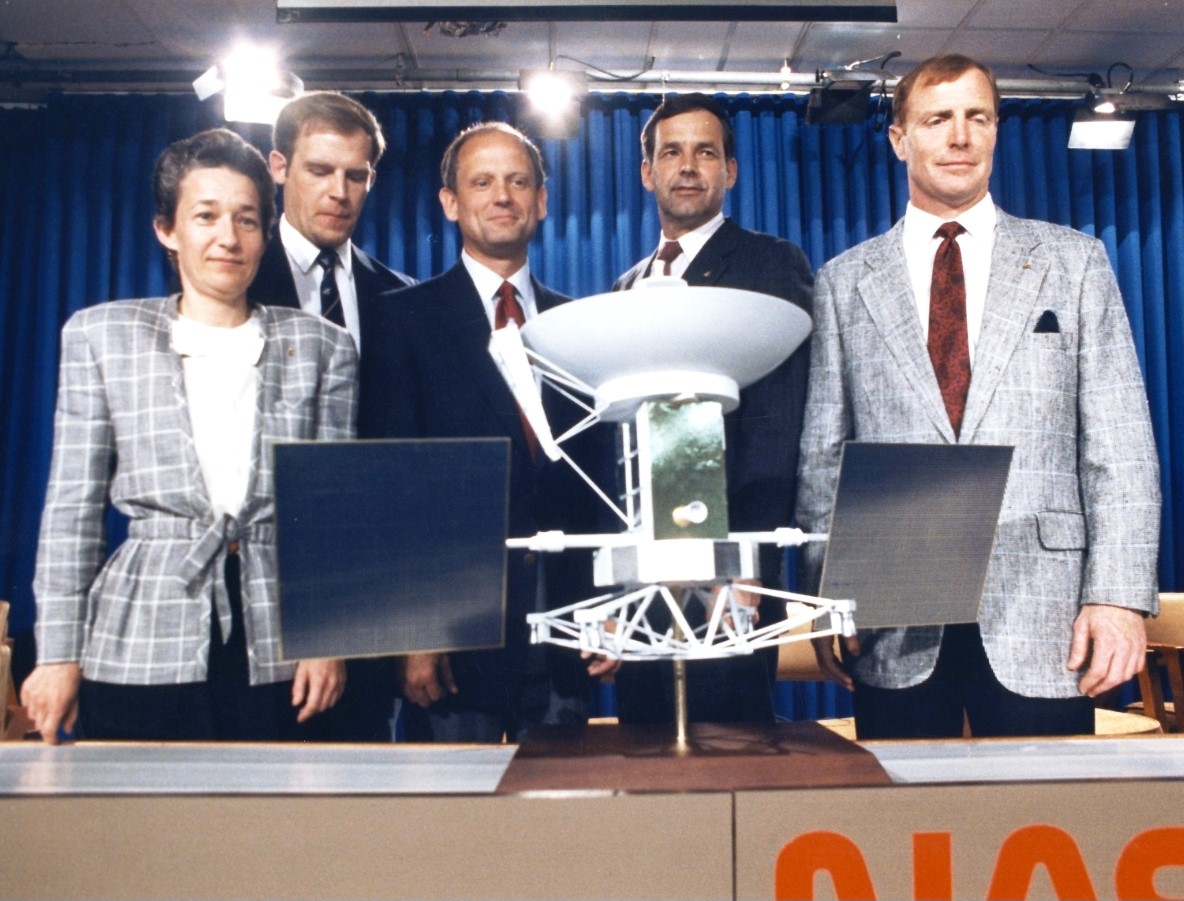
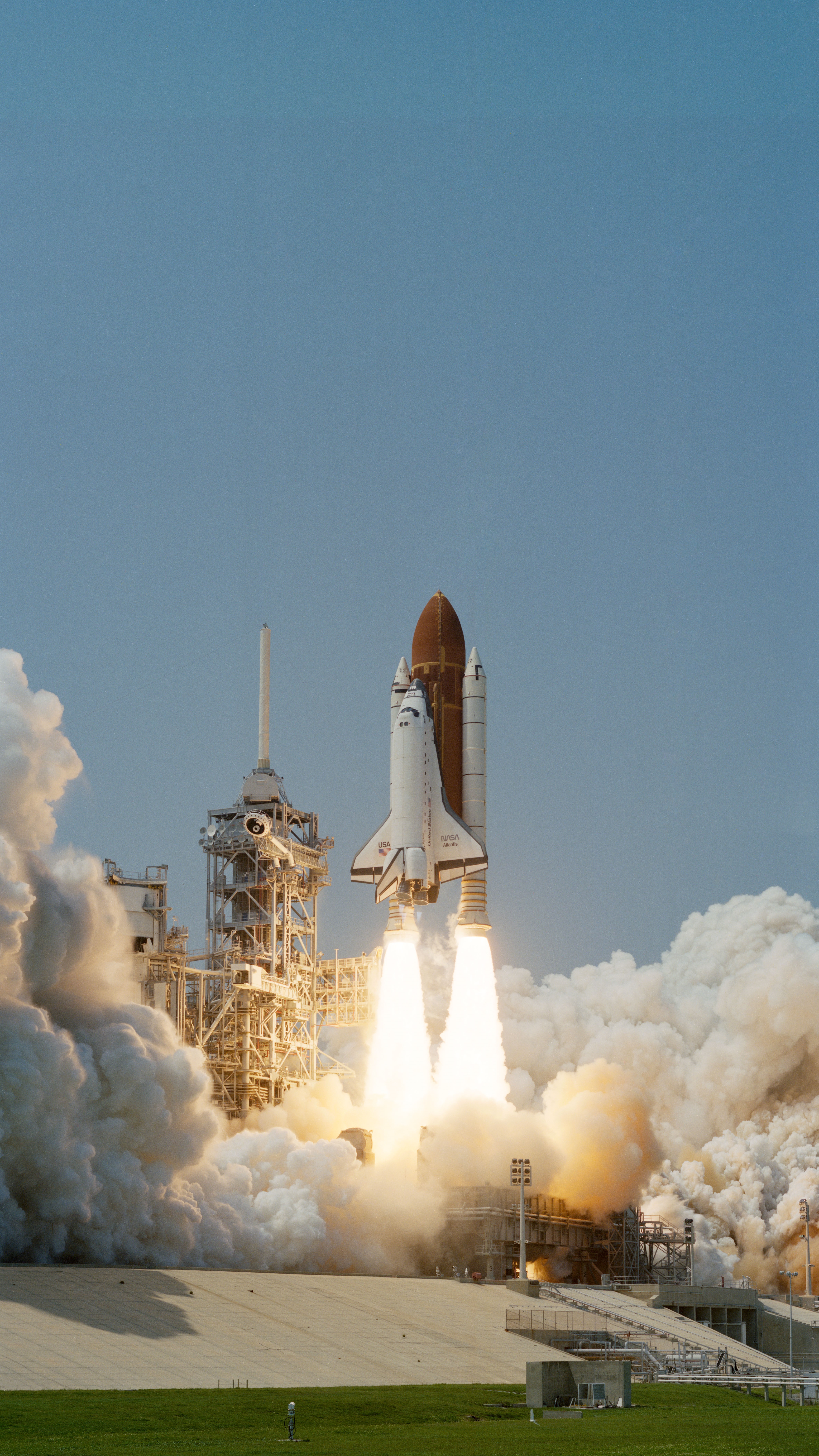
Left: Space shuttle Atlantis arrives at Launch Pad 39B. Middle: STS-30 astronauts pose with a model of Magellan following their March 27 preflight press conference. Right: Atlantis rises into the sky.
Magellan arrived at KSC on Oct. 8, 1988, for preflight processing in a clean room at the Spacecraft Assembly and Encapsulation Facility (SAFE). On Feb. 15, 1989, workers moved Magellan from the SAFE to the Vertical Processing Facility for mating with the IUS and reinstallation of its high-gain antenna. On March 17, they transported Magellan out to Launch Pad 39B, where it awaited Atlantis’ arrival.
On March 11, workers rolled Atlantis from the OPF to the Vehicle Assembly Building for mating with its External Tank and twin Solid Rocket Boosters. Atlantis rolled out to Launch Pad 39B on March 22, just nine days after Discovery lifted off from the same pad on the STS-29 mission, the shortest such turnaround time. Workers installed Magellan into Atlantis’ payload bay on March 25. The Terminal Countdown Demonstration Test took place on April 6-7, with the astronauts participating in the final few hours as on launch day. Senior NASA managers held the Flight Readiness Review on April 13-14 and declared Atlantis and Magellan ready for launch on April 28. The five-member astronaut crew arrived at KSC on April 25 for final preparations for the launch.
An international delegation including Soviet scientists and Soviet cosmonaut Igor D. Volk, training to fly the Soviet shuttle Buran, arrived at KSC to witness the planned launch. The countdown continued smoothly for the mid-afternoon liftoff until one of the range safety computers went offline. Faced with a short 23-minute launch window, range safety officers got the computer back online, having delayed the planned liftoff by only five minutes. Then at T-31 seconds, the ground launch sequencer called a halt to the countdown due to the failure of a recirculating pump in main engine number 1, scrubbing the launch for the day. The crew exited Atlantis 46 minutes later and returned to crew quarters to try another day. That day came on May 4, after technicians replaced the faulty pump and a hydrogen line. The launch window had grown to a more comfortable one hour and four minutes, with the fickle Florida weather using up much of that time.
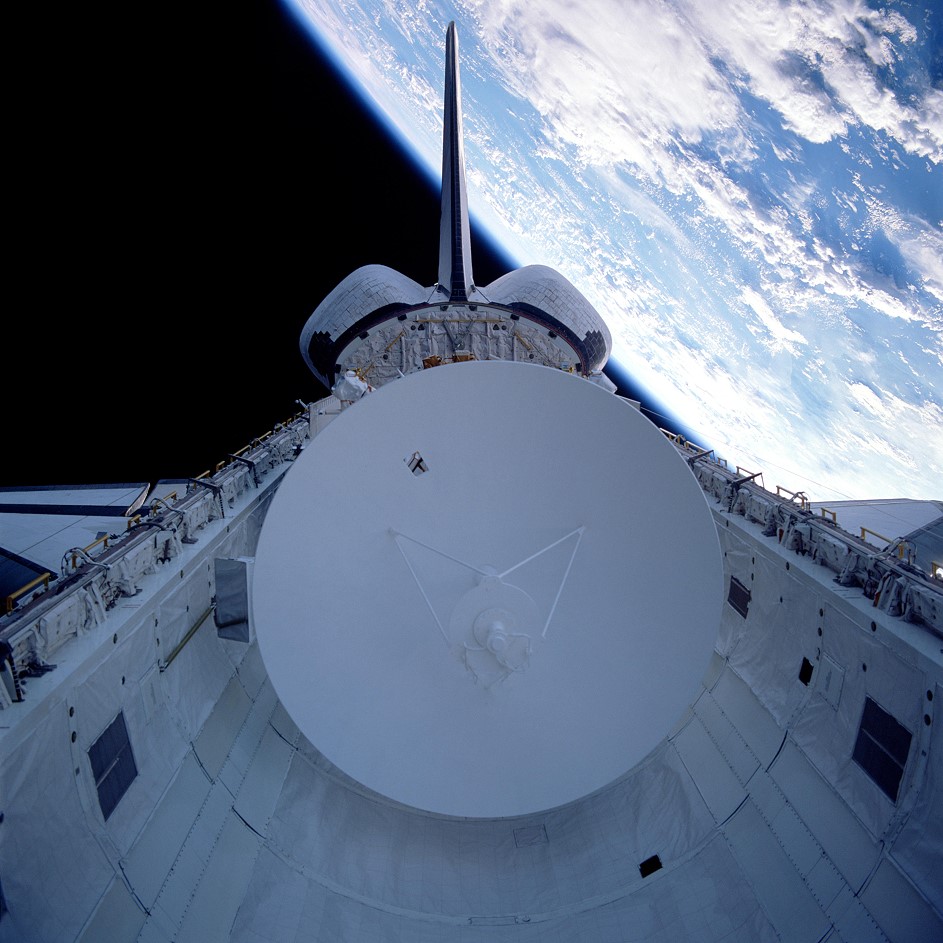
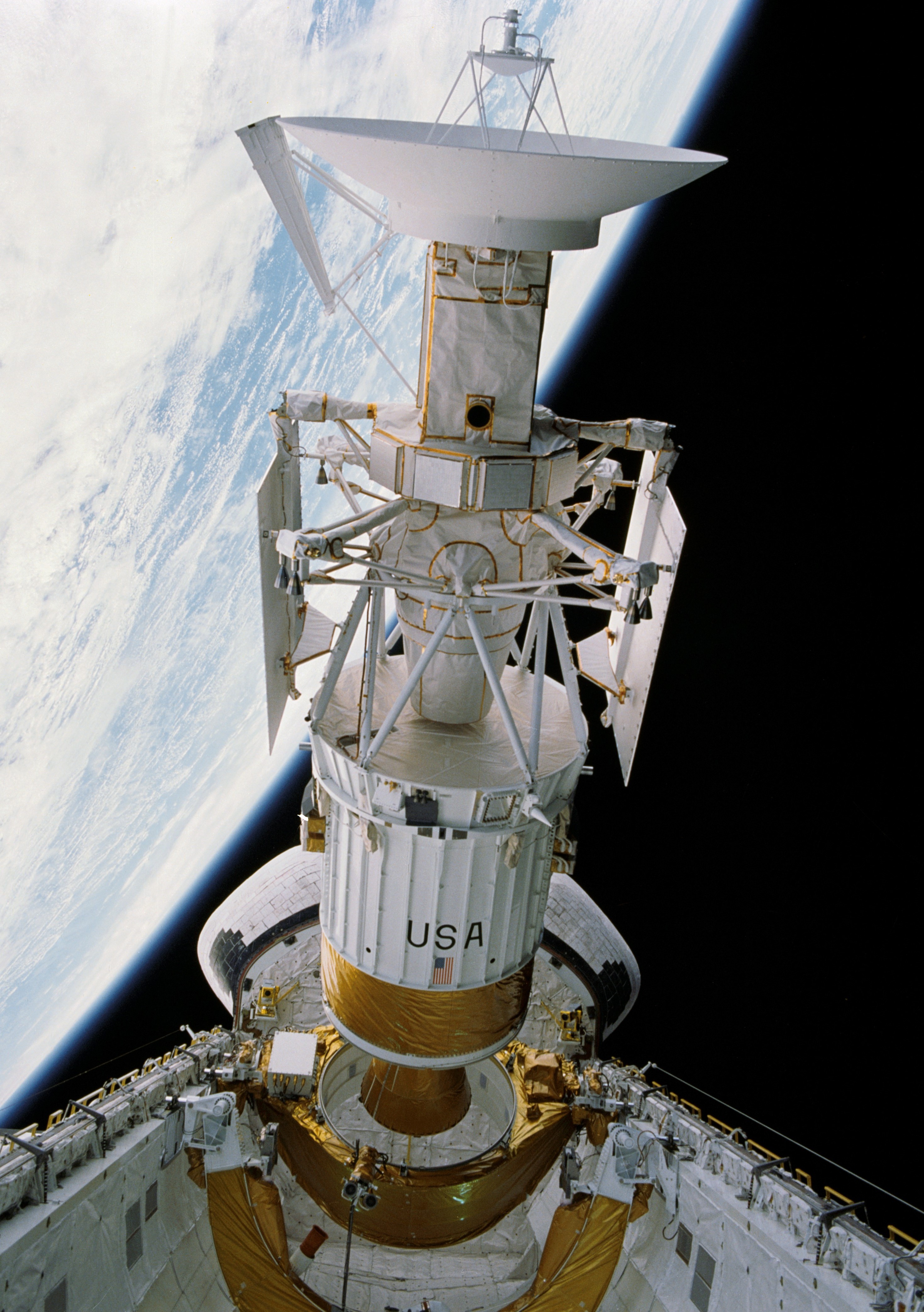
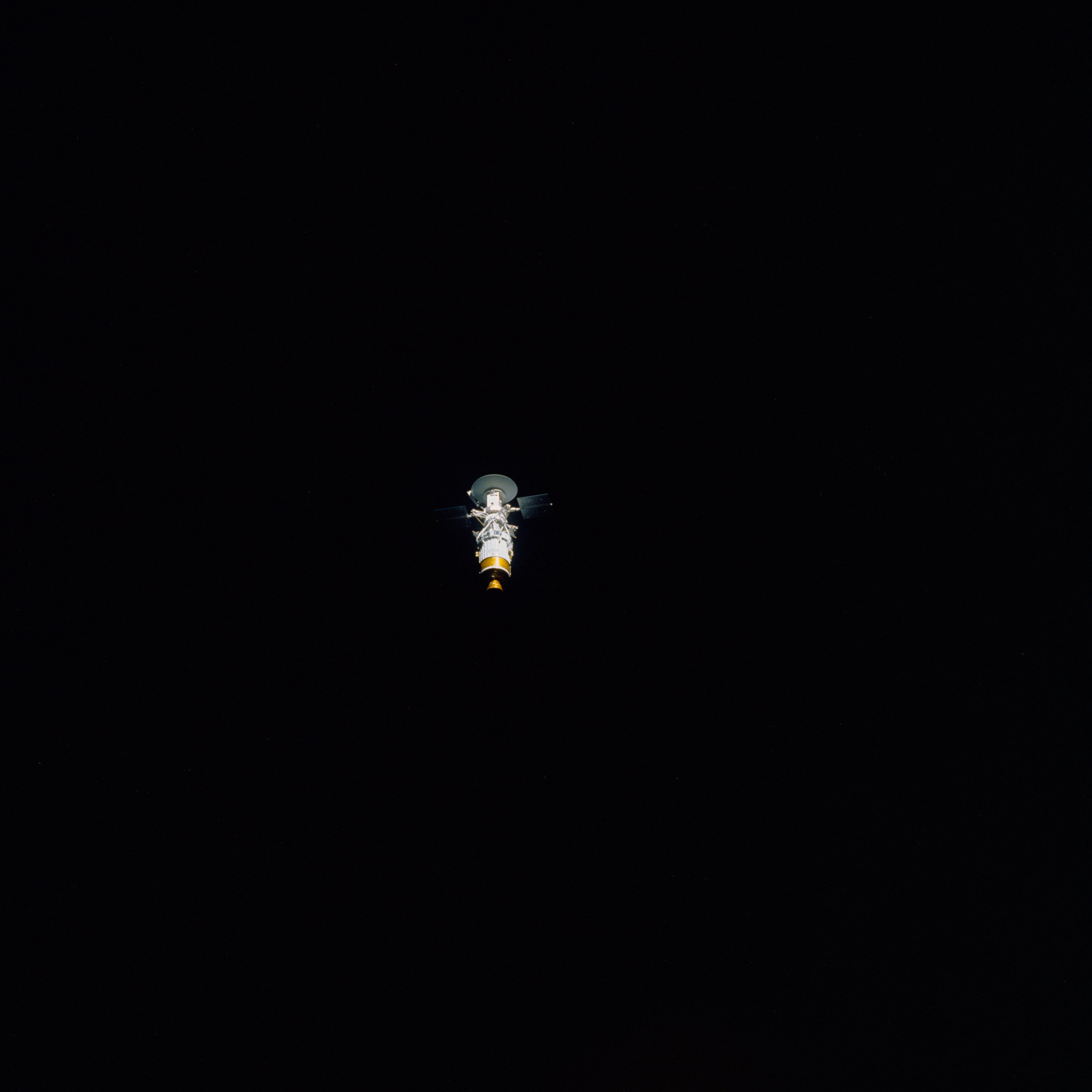
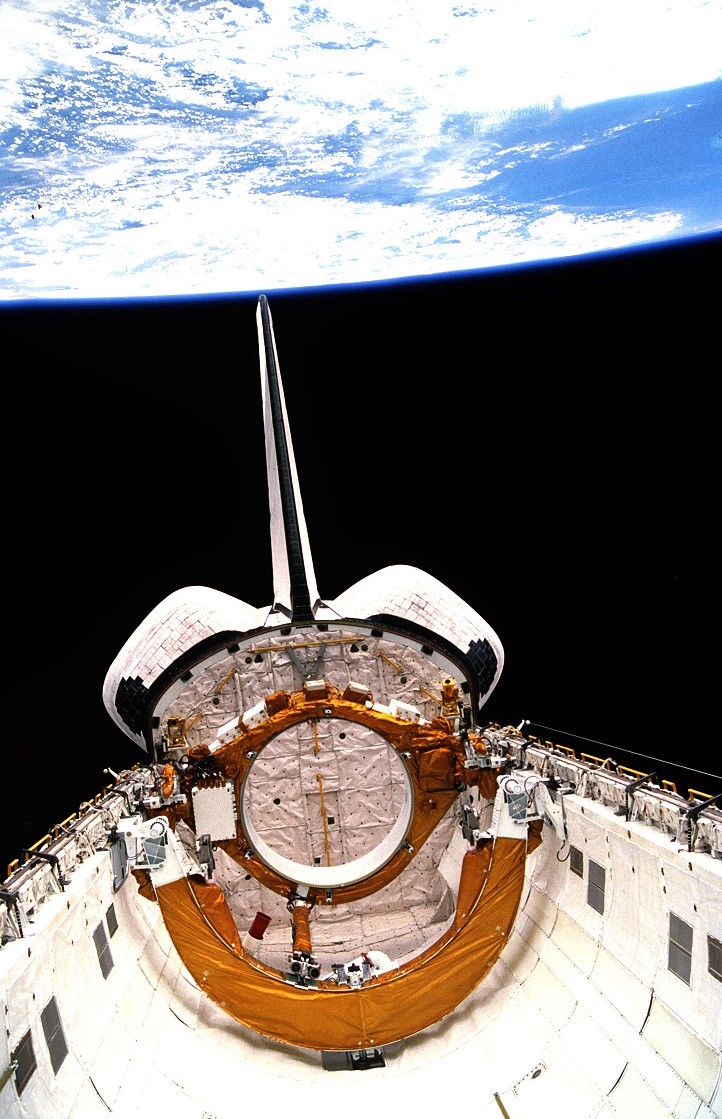
Left: Magellan in Atlantis’ payload bay, its large high-gain antenna prominently visible. Middle left: Magellan and its Inertial Upper Stage moments after deployment from Atlantis. Middle right: With its solar arrays now deployed, Magellan departs from the shuttle. Right: Atlantis’ empty payload bay after Magellan’s departure.
With clouds and winds threatening to scrub the launch, Atlantis found a few minutes of acceptable weather near the end of the launch window and lifted off at 2:47 p.m. EDT, sending America’s first planetary spacecraft in 11 years on a mission to map Venus’ cloud-shrouded surface. As soon as the shuttle cleared the launch tower, control shifted to the Mission Control Center at NASA’s Johnson Space Center in Houston, where Ascent Flight Director A. Lee Briscoe and his team of operators, including astronaut Frank L. Culbertson serving as the capsule communicator, or capcom, monitored all aspects of the launch. Following main engine cutoff, Atlantis and its crew had reached space but not yet achieved orbit. Two minutes later, a 2-minute 39-second firing of the Orbital Maneuvering System (OMS) engines placed them in a 184-by-75-mile orbit. Forty minutes later, a second 2-minute OMS burn circularized the orbit at 184 miles. The astronauts removed their bulky Launch and Entry Suits (LES) and prepared Atlantis for orbital operations, including opening the payload bay doors. Preparations for Magellan’s deployment began shortly thereafter. In Mission Control, Flight Director J. Milton Heflin and his team, including capcom Pierre J. Thuot, took over to assist the crew with deployment operations. The astronauts activated Magellan and the IUS and ground teams began checking out their systems, with the first TV from the mission showing the spacecraft and its upper stage in the payload bay. Walker and Grabe oriented Atlantis to the deployment attitude while Lee raised Magellan’s tilt table first to 29 degrees then to the deploy position of 52 degrees. With all systems operating normally, Mission Control gave the go for deploy. Six hours and 14 minutes into the mission, Walker called down, “Magellan is deployed.” The 40,118-pound spacecraft and upper stage combination glided over the shuttle’s crew compartment. Ten minutes later, Magellan deployed its two solar array wings to begin generating power. Walker and Grabe fired the two OMS engines to move Atlantis a safe distance away from the IUS burn that took place one hour after deployment, sending Magellan on its way to Venus. The primary task of the mission accomplished, the astronauts prepared for their first night’s sleep in space.
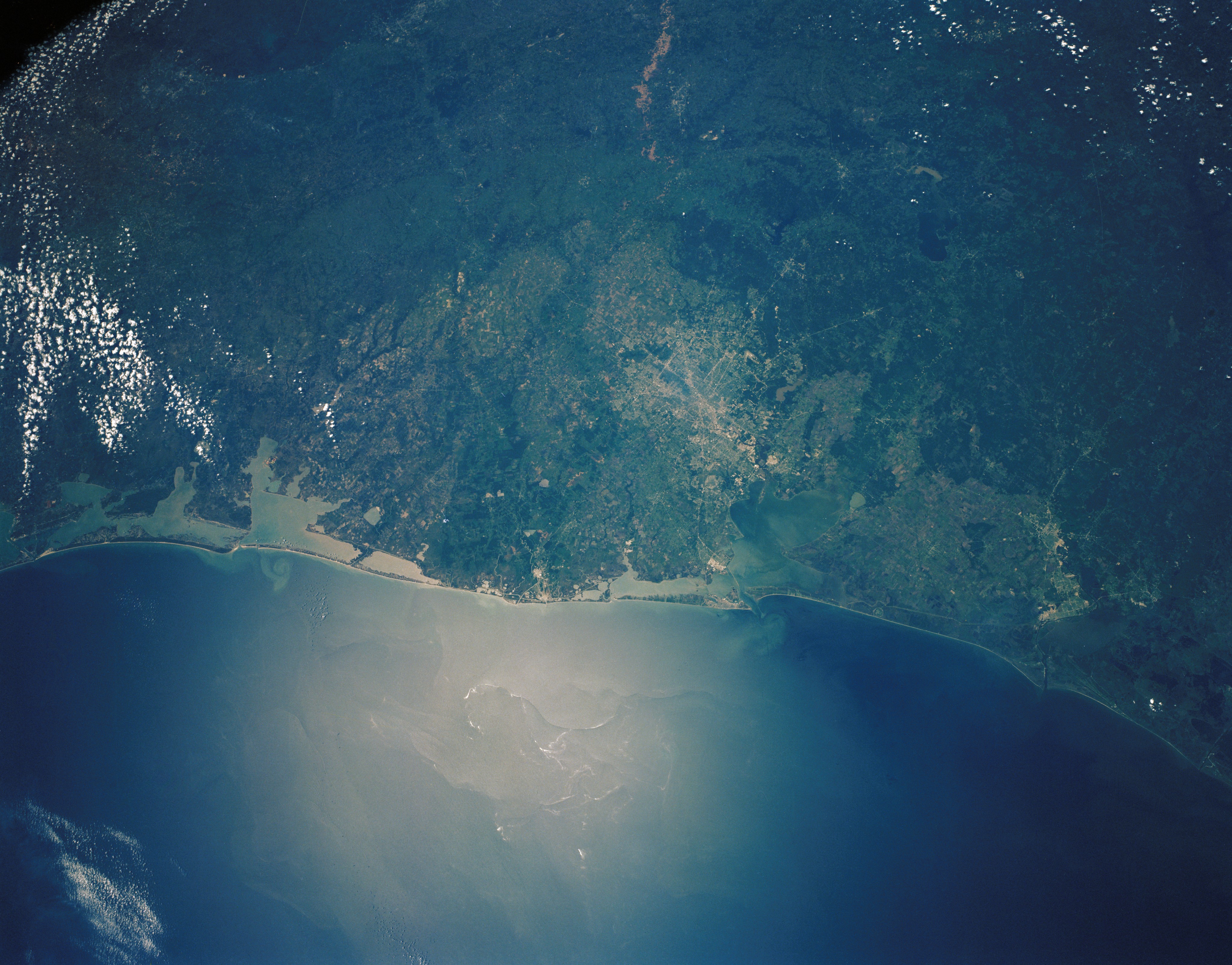
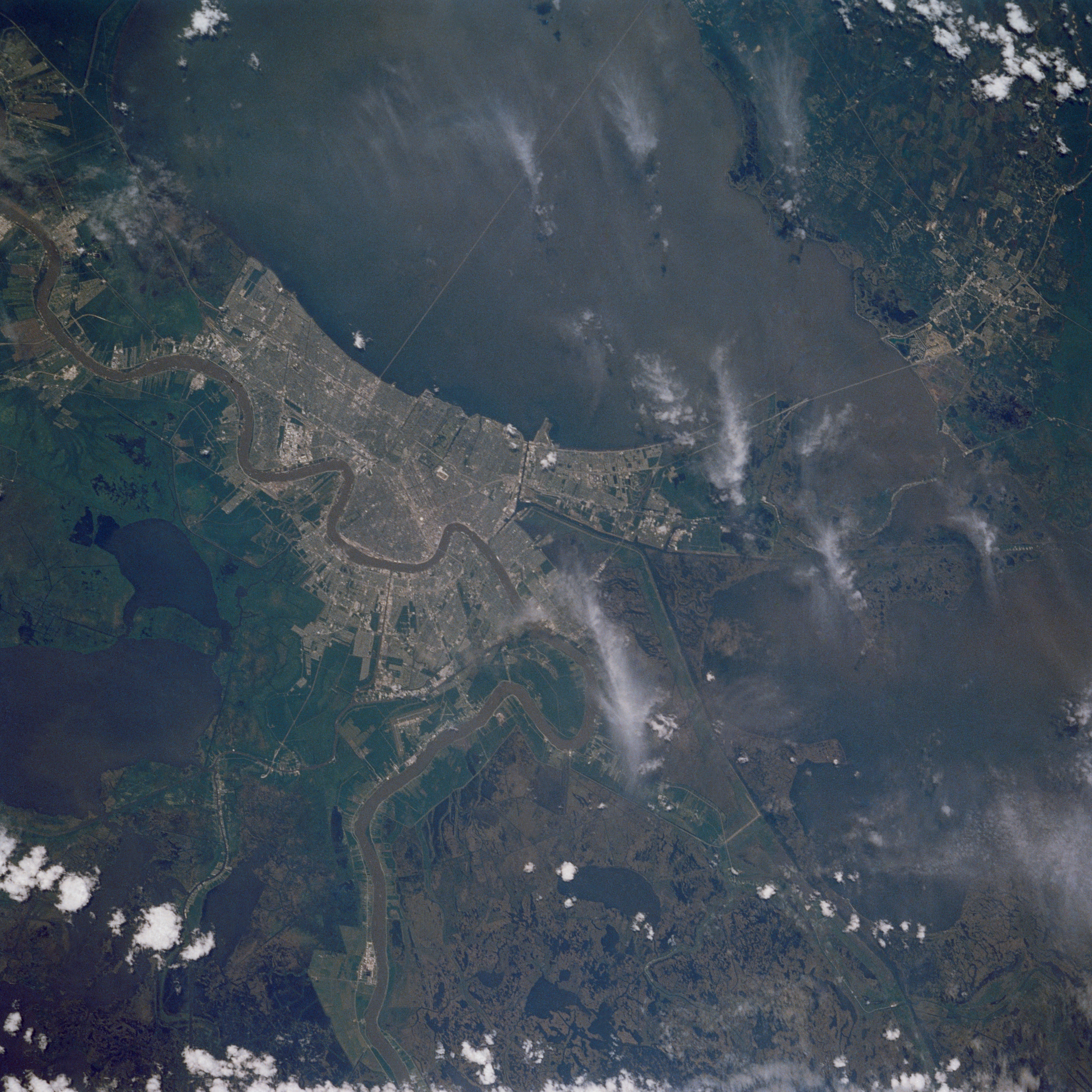
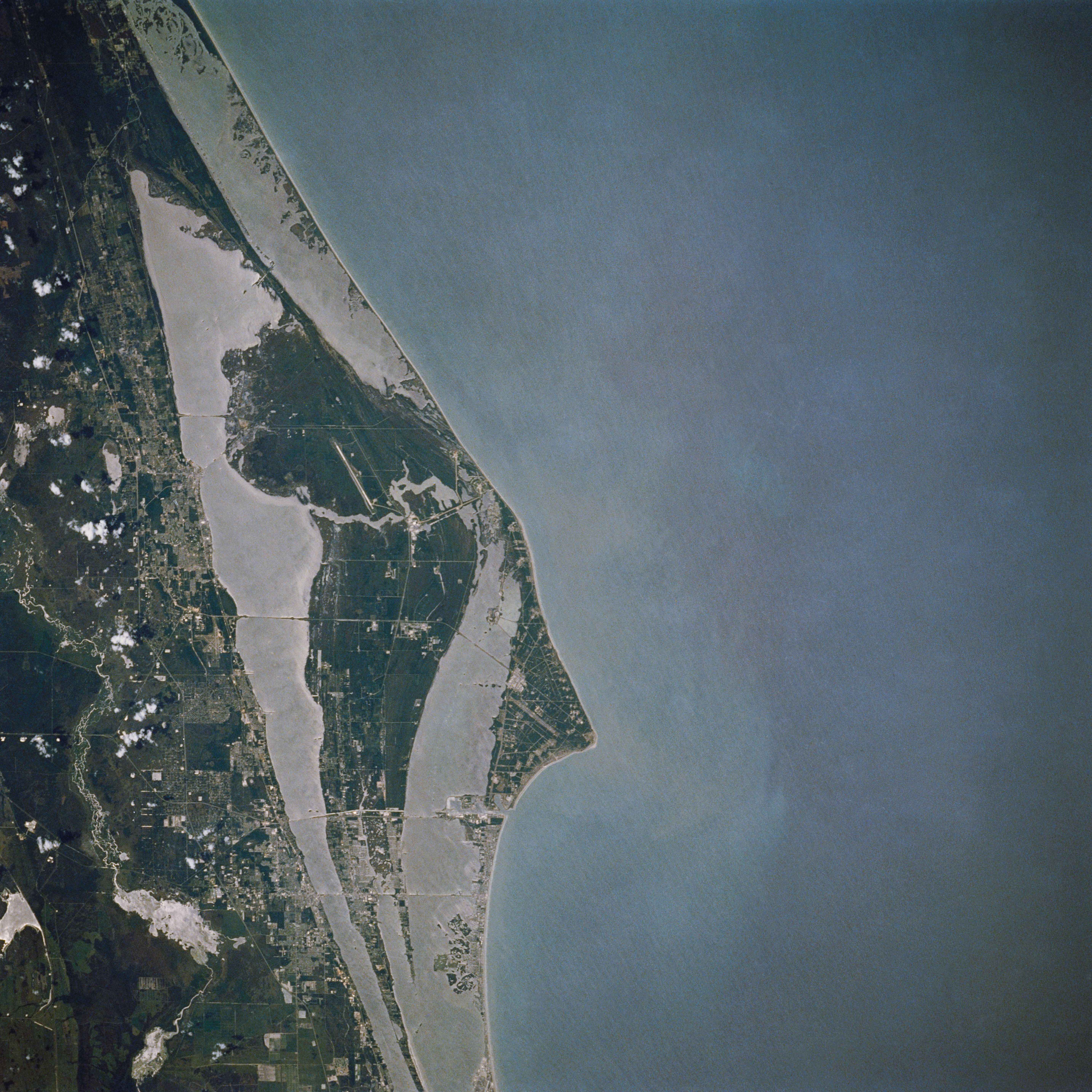
STS-30 crew Earth observation photographs. Left: The Texas Gulf Coast including Houston. Middle: New Orleans. Right: The Cape Canaveral area in Florida including NASA’s Kennedy Space Center.
Mission Control awakened the crew with the theme music from the movie “Superman” to begin their second mission day, their first full day in space. Compared to their very busy first day, the rest of the mission’s timeline seemed relatively more relaxed. Cleave began work on the Fluids Experiment Apparatus (FEA), a modular chemistry and physics laboratory specifically designed for space shuttle missions. On STS-30, Cleave and Lee processed samples of indium and selenium in the FEA to see the effects of microgravity on the crystals produced. The astronauts took many photographs of the Earth as it passed by below them. Walker saluted the ground control teams at the Guam and Santiago, Chile, tracking stations, scheduled for closure at the end of STS-30. The deployment of the Tracking and Data Relay Satellite System made many ground stations obsolete.
To begin their third day in space, Mission Control awaked the astronauts with fight songs from their alma maters. The rousing music prompted Walker to say, “Good morning, Houston! Thanks for the great music!” After giving Mission Control a video tour of Atlantis’ cabin, Thagard and Lee began a test to see if the LES helmet with a Helmet Retention Assembly can serve to prebreathe pure oxygen prior to a spacewalk. With no spacewalk planned for STS-30, their test simply intended to prove the concept. After Thagard and Lee began to breathe pure oxygen, the crew lowered the cabin pressure from the nominal 14.7 pounds per square inch (psi) to 10.2 psi to assist in the prevention of decompression sickness, also known as the bends. After completing the one-hour test, Thagard and Lee removed their helmets.
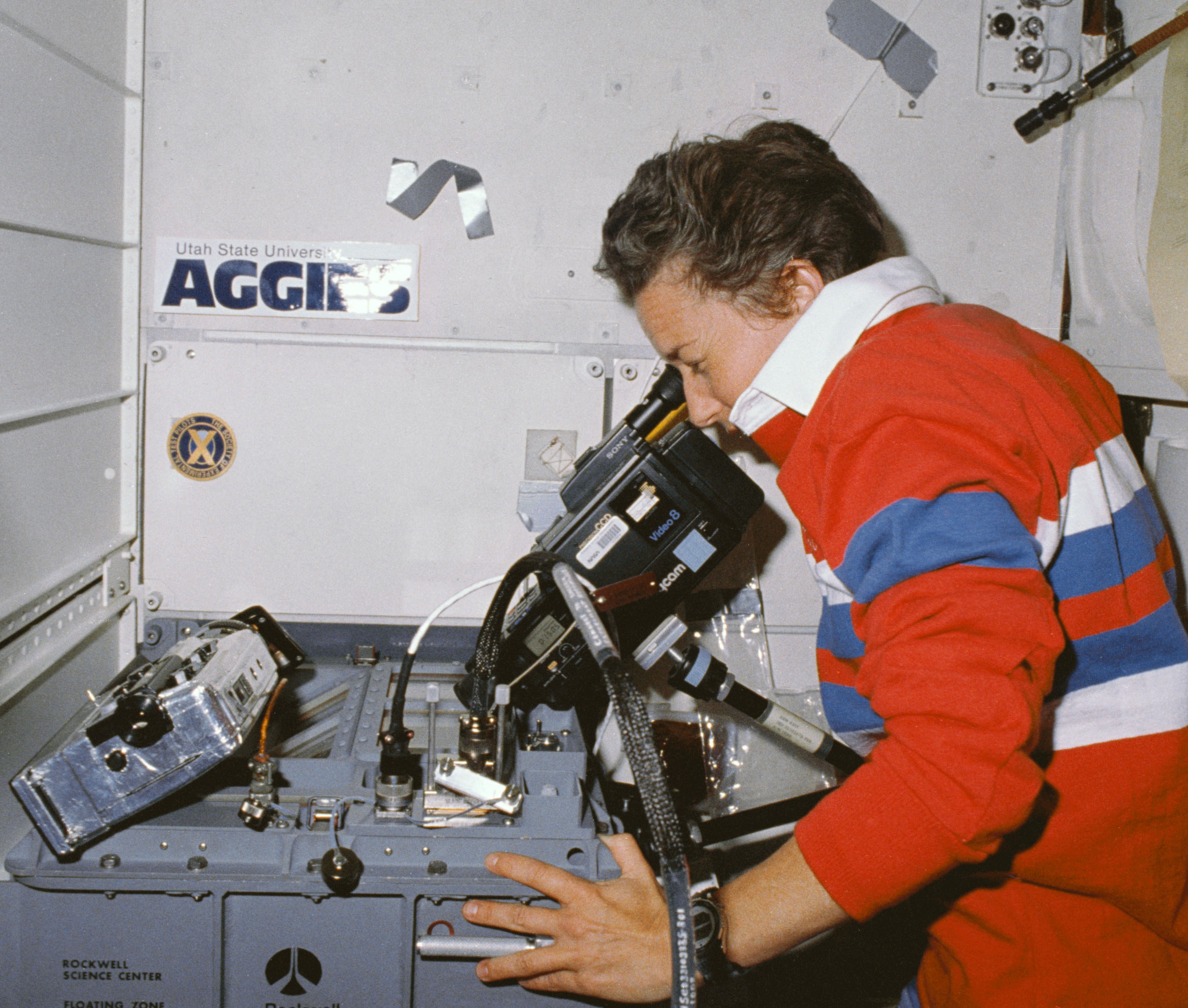
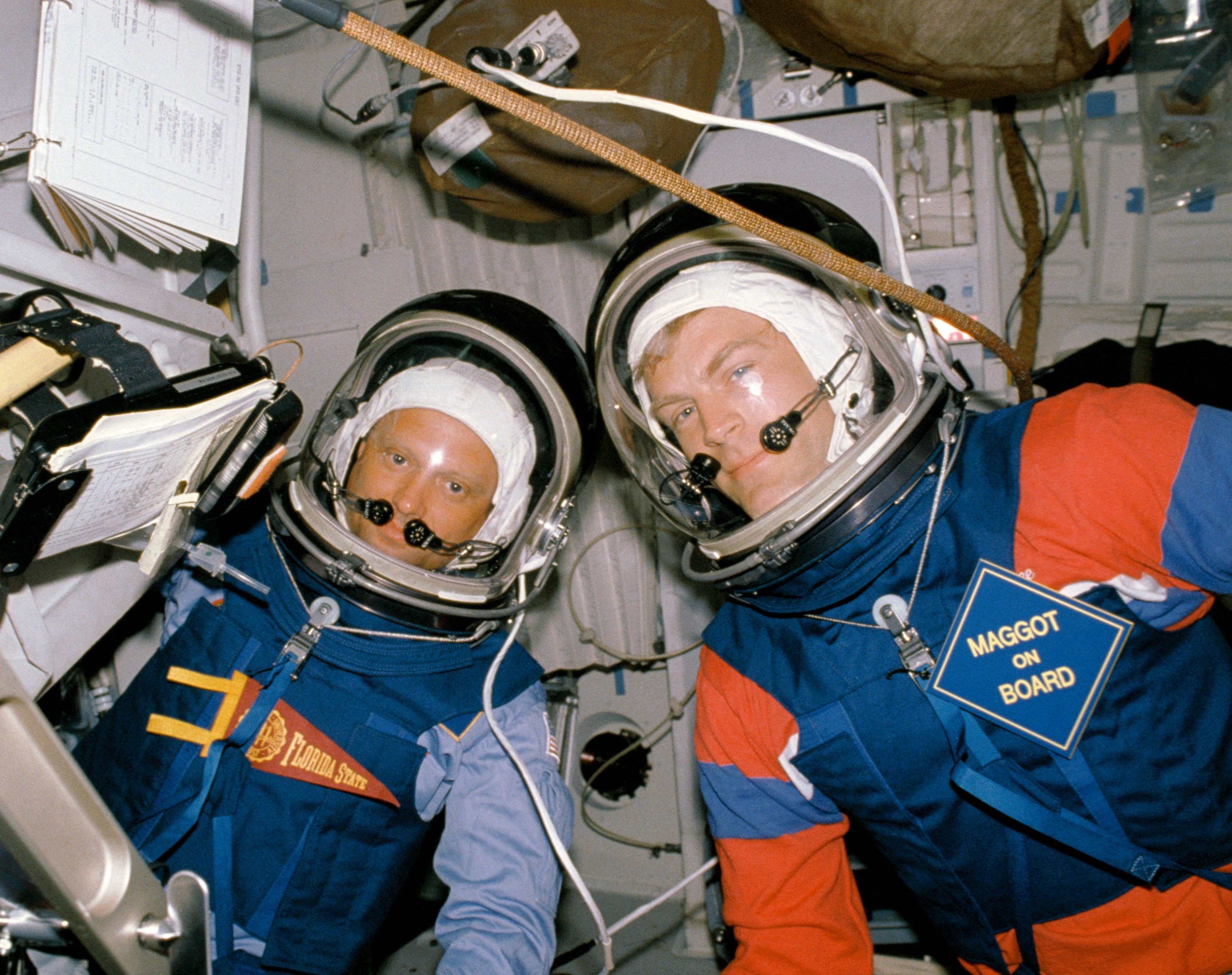
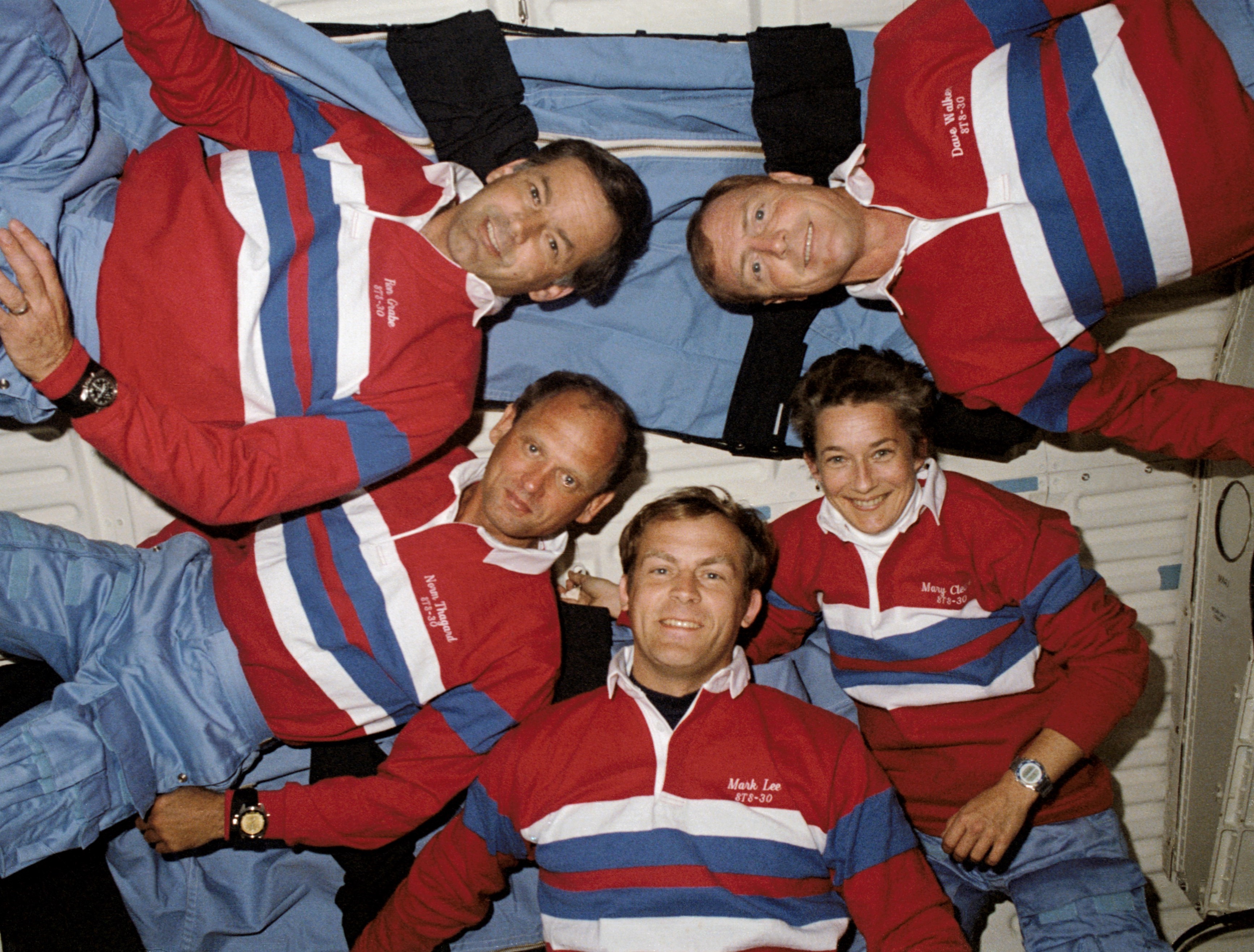
Left: Mary L. Cleave videotapes the progress of an experiment in the Fluids Experiment Apparatus. Middle: Norman E. Thagard, left, and Mark C. Lee during the helmet retention assembly prebreathe test. Right: Inflight photograph of the STS-30 crew.
Mission Control began the astronaut’s fourth day in space, their last full day in orbit, with the theme music from the movie “Rocky.” The day’s first major event involved a 15-minute news conference with United Press International reporters Rob Navias and Bill Harwood. In preparation for the entry and landing the following day, the astronauts tested the vehicle’s Auxiliary Power Units, aerodynamic surfaces, and reaction control system thrusters. They then repressurized the cabin back to 14.7 psi. Suddenly, one of the spacecraft’s General Purpose Computers (GPC-4) went offline, failing to synchronize with the other GPCs. While not an immediate impact to their work, Mission Control was concerned about its function during the critical entry and landing the next day, and they ordered the crew to replace the faulty unit, never before done in space. The astronauts successfully completed the four-hour task and had the replacement GPC up and running, but the time spent on the computer replacement caused the cancellation of the final FEA sample run. The crew stayed up an extra hour to complete all their stowage tasks before retiring for their final night’s sleep in space.
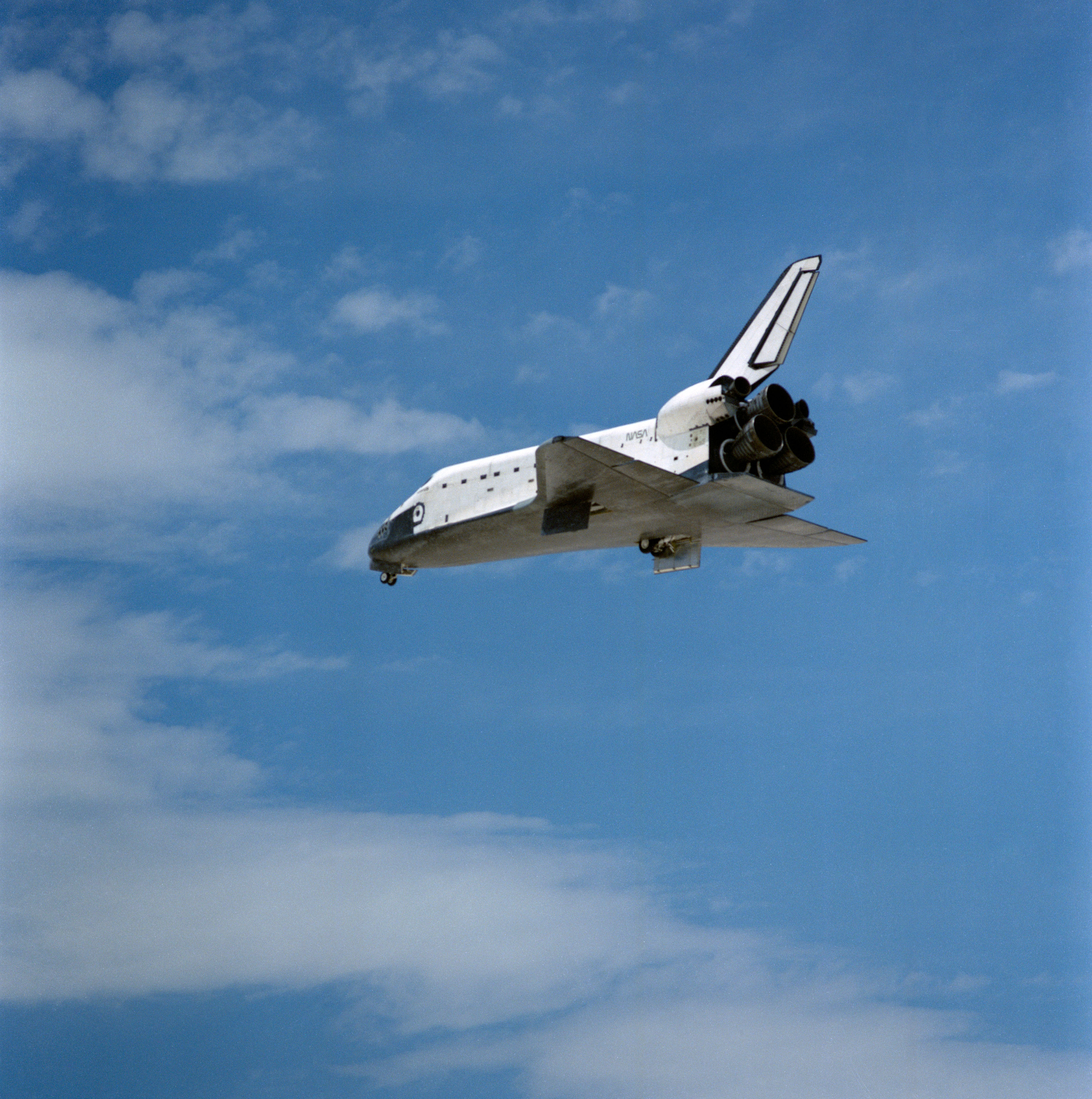
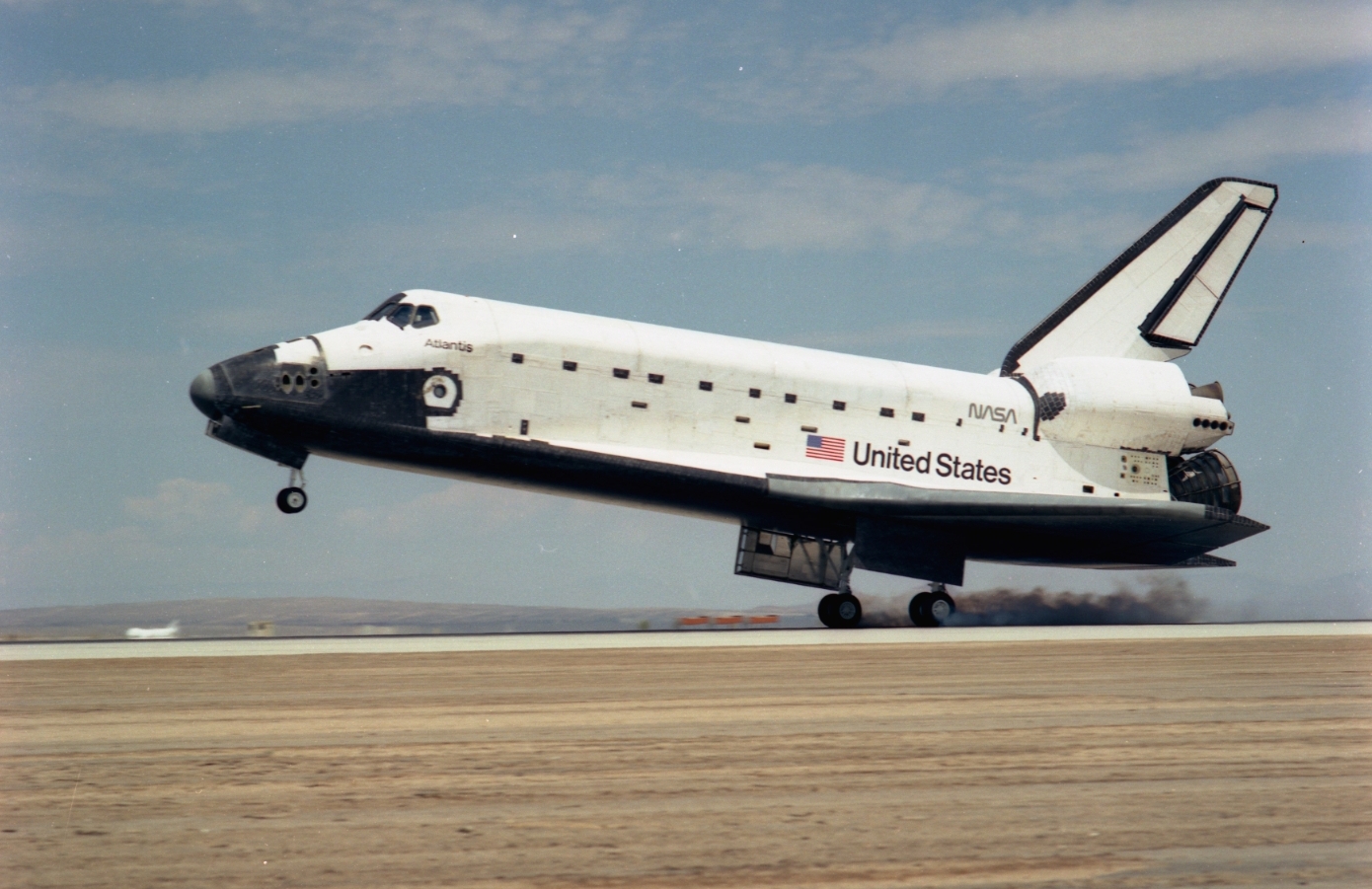
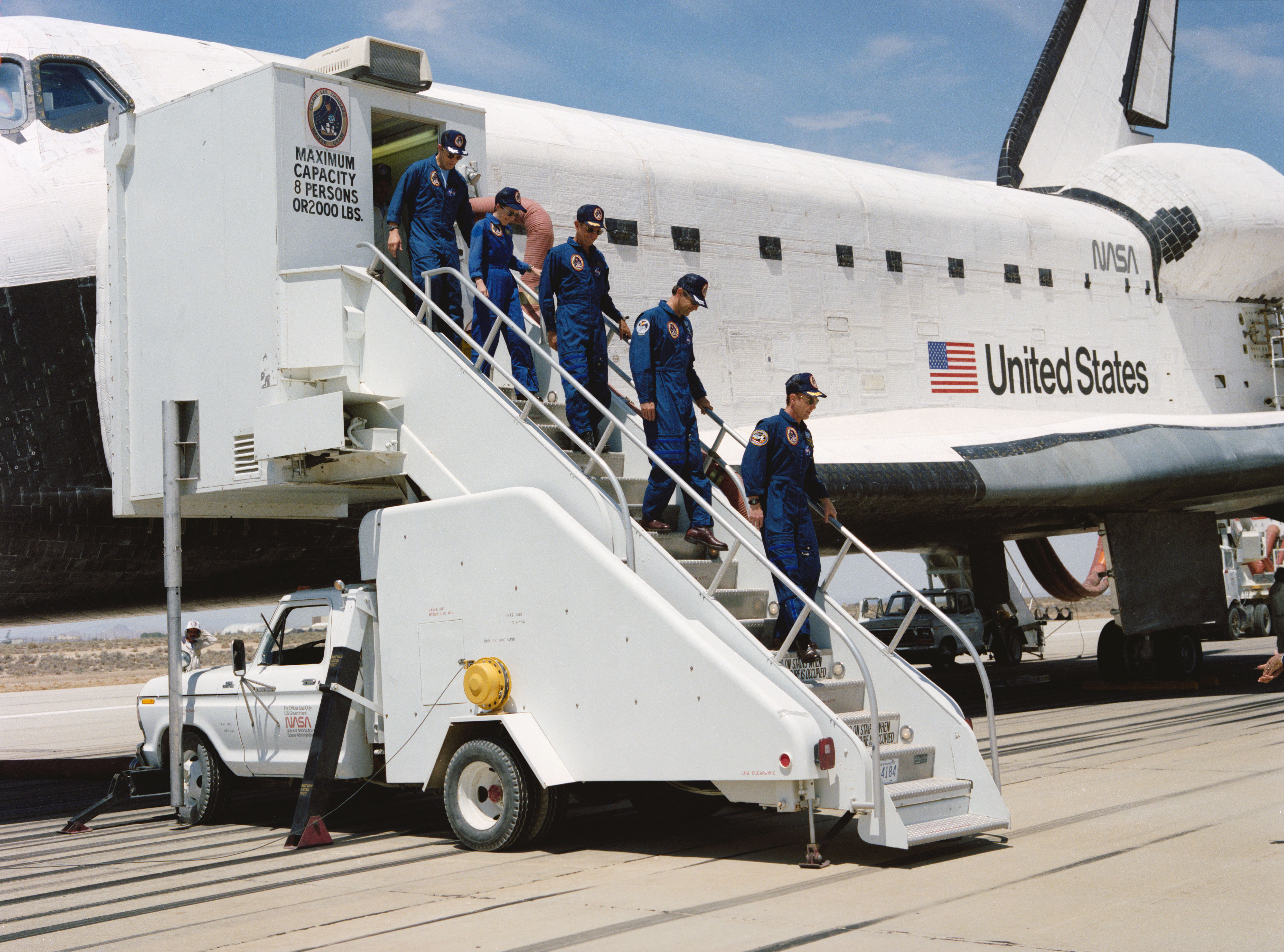
Left: Its landing gear lowered, Atlantis approaches the runway at Edwards Air Force Base in California. Middle: Atlantis touches down. Right: The STS-30 astronauts exit Atlantis.
On May 8, the astronauts awakened for their final day in space. The wake-up call from Mission Control consisted of a barking dog followed by The Beatles song “A Hard Day’s Night.” Capcom Kenneth D. Cameron greeted them with, “Good morning! It’s time to come home.” In preparation for reentry, the astronauts donned their orange LESs and closed the payload bay doors. Walker and Grabe oriented Atlantis into the deorbit attitude, with the OMS engines facing in the direction of travel. Over the Indian Ocean, they fired the two engines for 2 minutes 48 seconds to bring the spacecraft out of orbit. They reoriented the orbiter to fly with its heat shield exposed to the direction of flight as it encountered Earth’s atmosphere at 419,000 feet. The buildup of ionized gases caused by the heat of reentry prevented communications for about 15 minutes but provided the astronauts a great light show. Variable winds at Edwards Air Force Base in California complicated the decision on which runway to land on to complete a planned crosswind test. Mission Control decided to wait until 20 minutes before touchdown to make the final determination. With Atlantis out of the blackout, Mission Control directed the crew to land on concrete runway 22 with acceptable crosswinds for the test. After completing the 200-degree Heading Alignment Circle turn, Walker aligned Atlantis with the runway, and Grabe lowered the landing gear. Atlantis touched down and rolled to a stop, ending a 4-day 56-minute flight, having completed 65 orbits of the Earth.
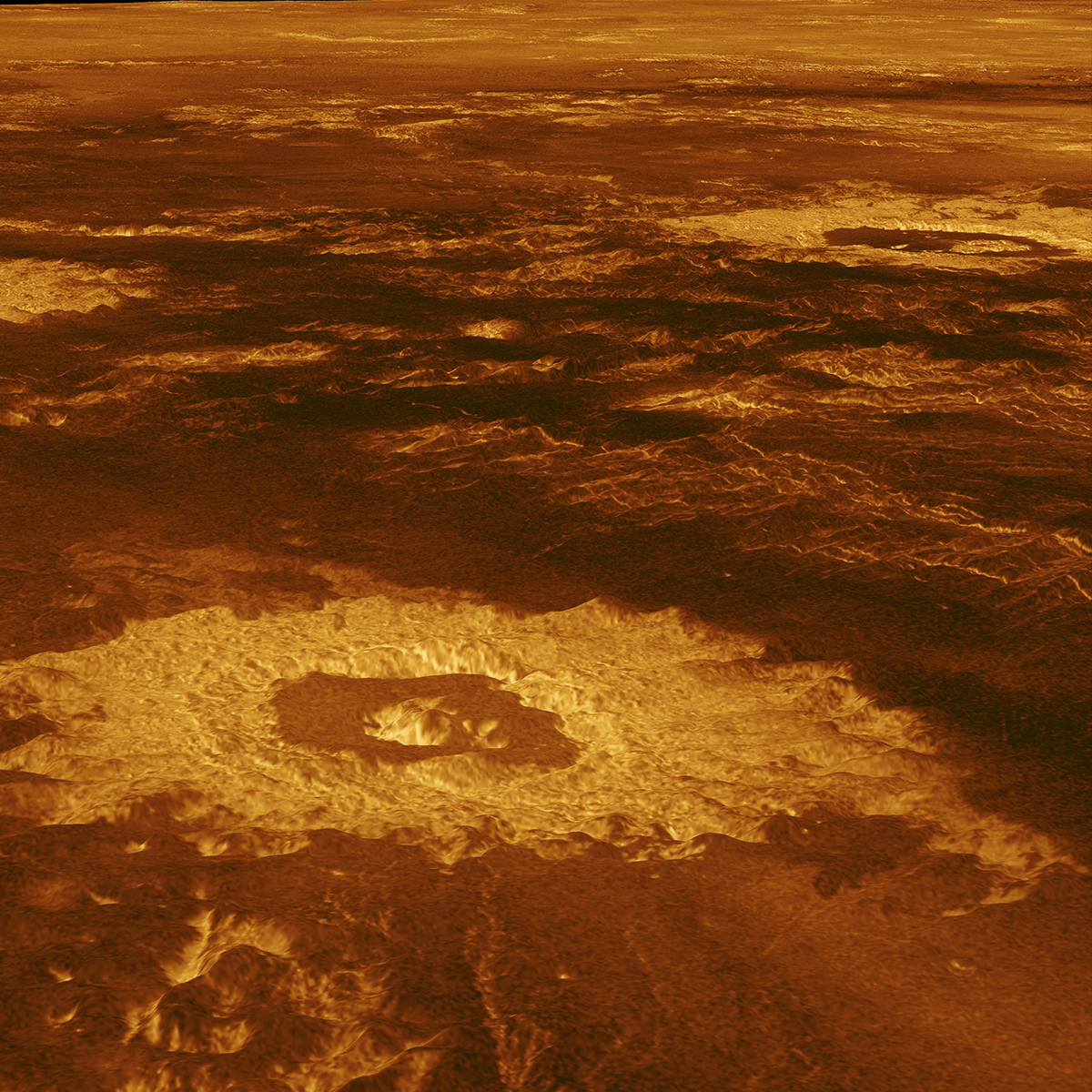
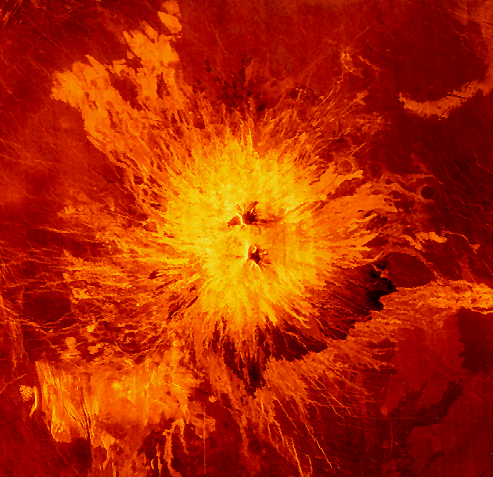
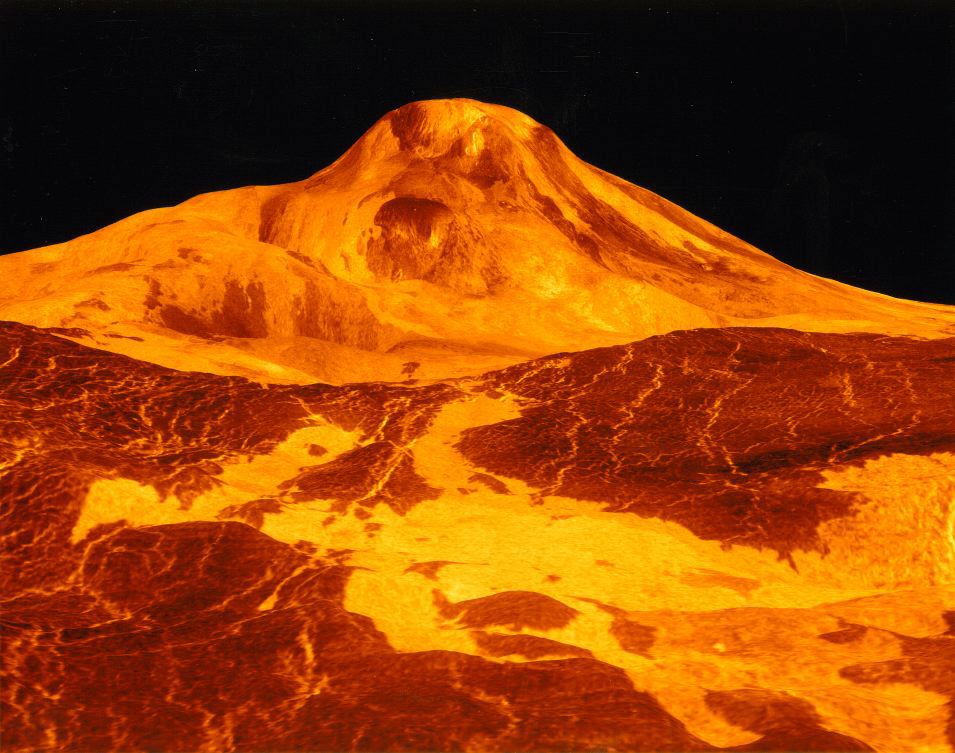
A sample of Magellan radar images of Venus. Left: Three impact craters in Venus’ Lavinia Planitia. Middle: Volcano Sapas Mons. Right: Maat Mons, second highest peak on Venus.
After deployment from the space shuttle, Magellan began its interplanetary journey. Midcourse corrections on May 21, 1989, March 13, 1990, and July 25, 1990, refined the trajectory as Magellan completed its 15-month journey to Venus on Aug. 10, 1990, entering an elliptical near-polar orbit around the planet. Recovering from two early communications glitches, Magellan began returning high-quality radar images of the cloud-shrouded planet on Sept. 15. The spacecraft completed its primary 243-day (the time it took Venus to complete one rotation) mission on May 15, 1991, imaging 83.7 percent of the planet’s surface at a resolution of between 100 and 250 meters, surpassing the original mission goals. It completed five more 243-day cycles, ending on Oct. 13, 1994, finishing with a coverage of 98 percent of the planet. In the summer of 1993, controllers commanded Magellan to skim through Venus’ upper atmosphere and use aerobraking to circularize its orbit to allow detailed mapping of the planet’s gravity field. To gather more aerodynamic data, controllers commanded Magellan to plunge into the Venusian atmosphere on Oct. 13, 1994, and it burned up on entry, having completed one of the most successful interplanetary missions during 15,000 orbits of Venus. The spacecraft returned more data than all of NASA’s previous planetary missions combined.
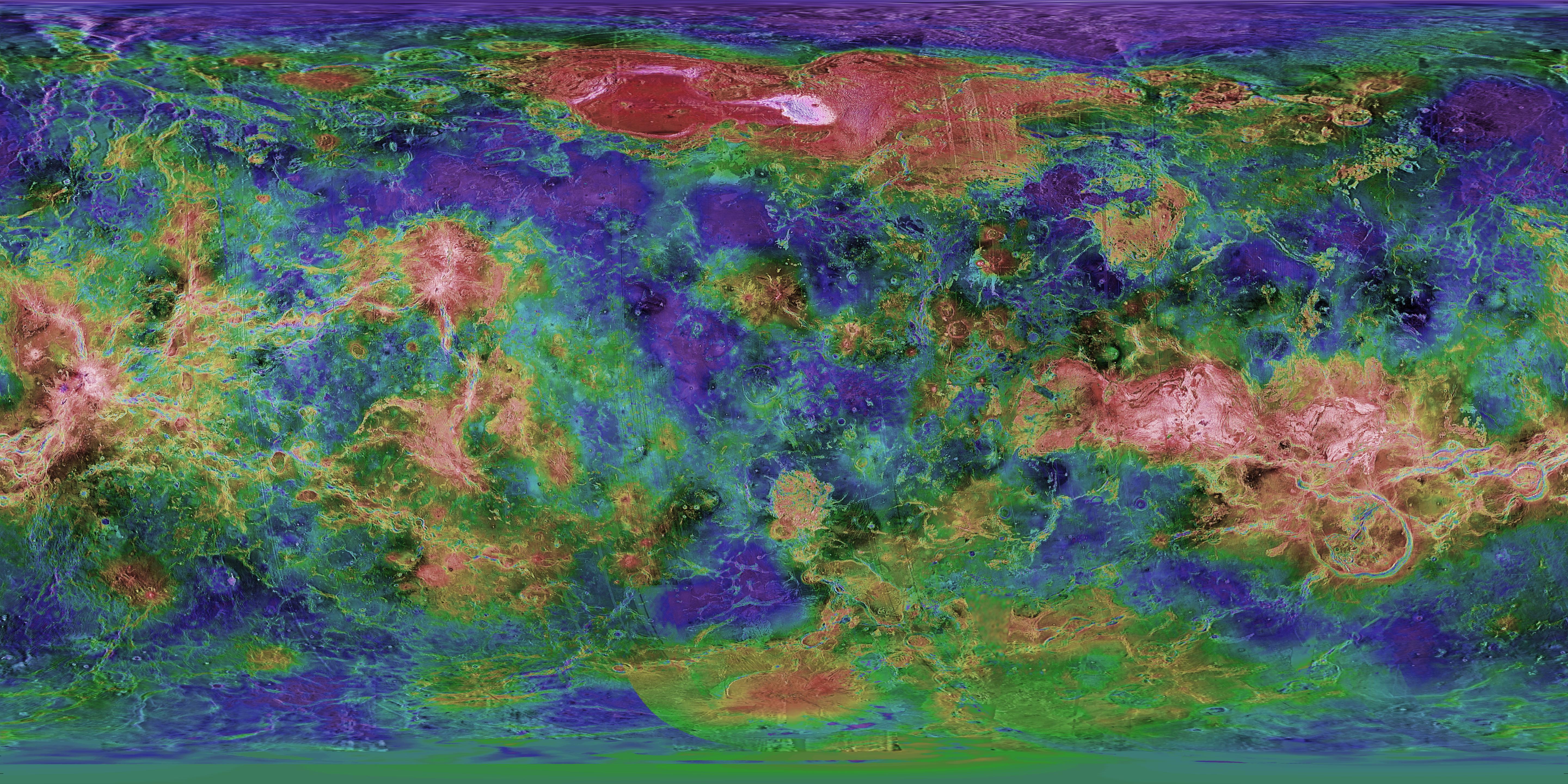
A topographic map of Venus based on Magellan radar data. Image credit: courtesy United States Geologic Service.
Radar data from Magellan allowed cartographers to create the first, and so far, the most detailed, global map of Venus. The images revealed a surface dominated by volcanic features with few impact craters, implying a geologically young surface, less than 800 million years old. Although Venus has a dense atmosphere, Magellan found little evidence of wind erosion, and the total absence of water makes erosion a very slow process on the planet.
Enjoy the crew narrated video of the STS-30 mission.
Read Cleave’s recollections of the STS-30 mission in her oral history with the JSC History Office.
What's Your Reaction?



















.jpg?#)
























